
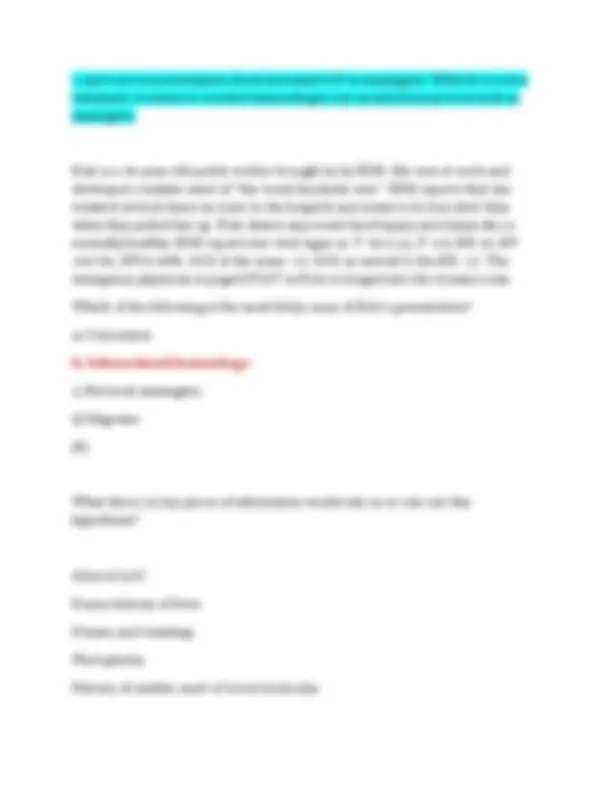
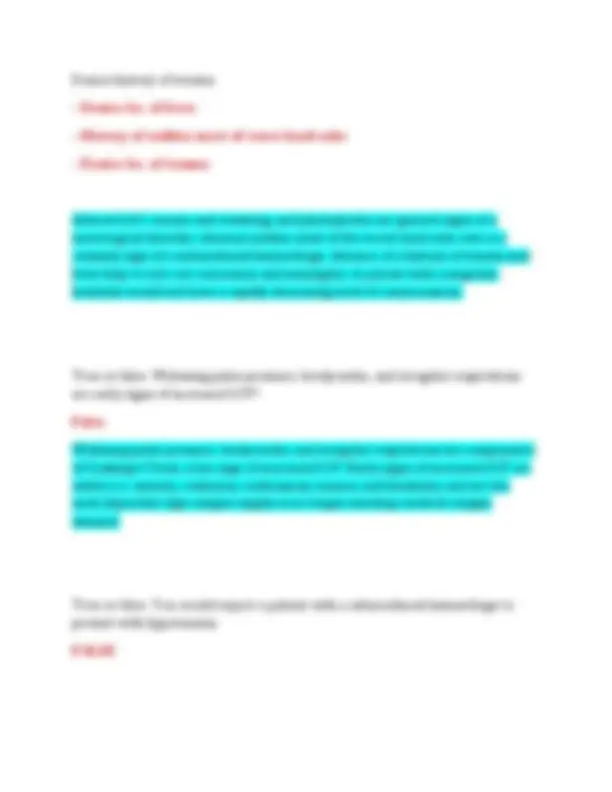
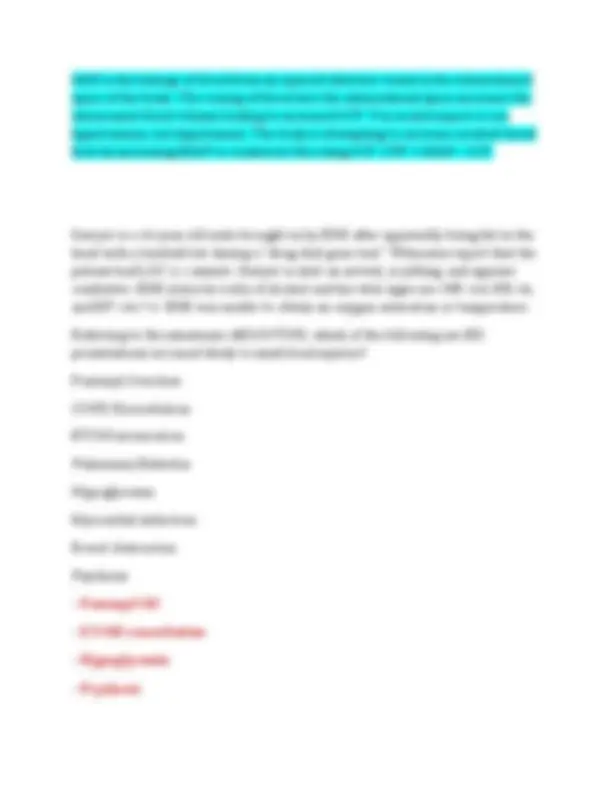
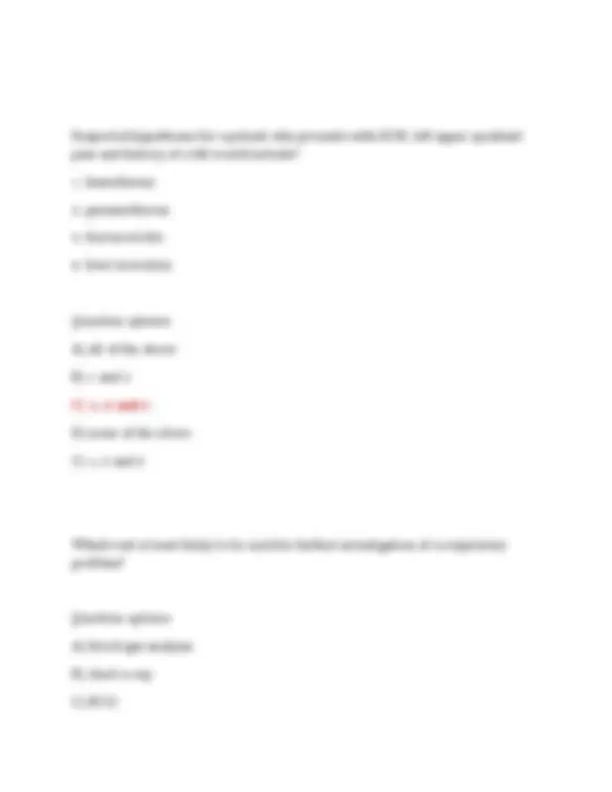
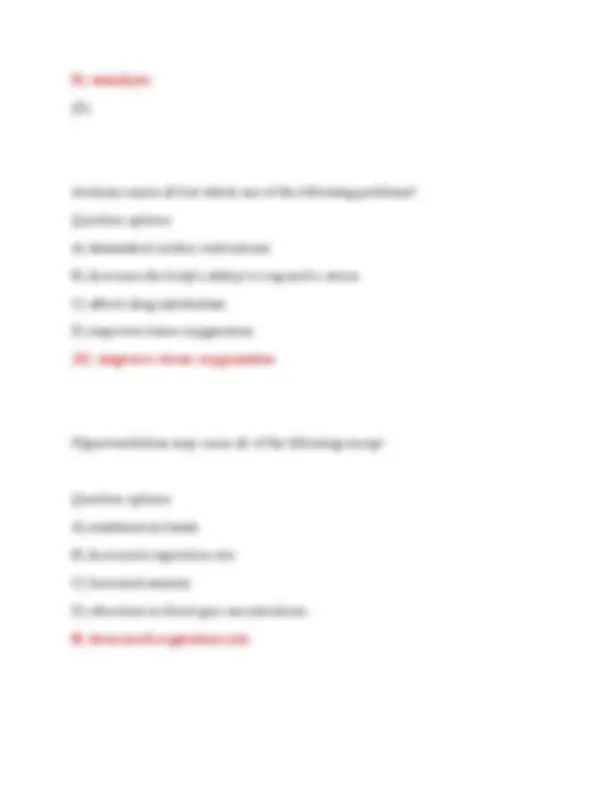
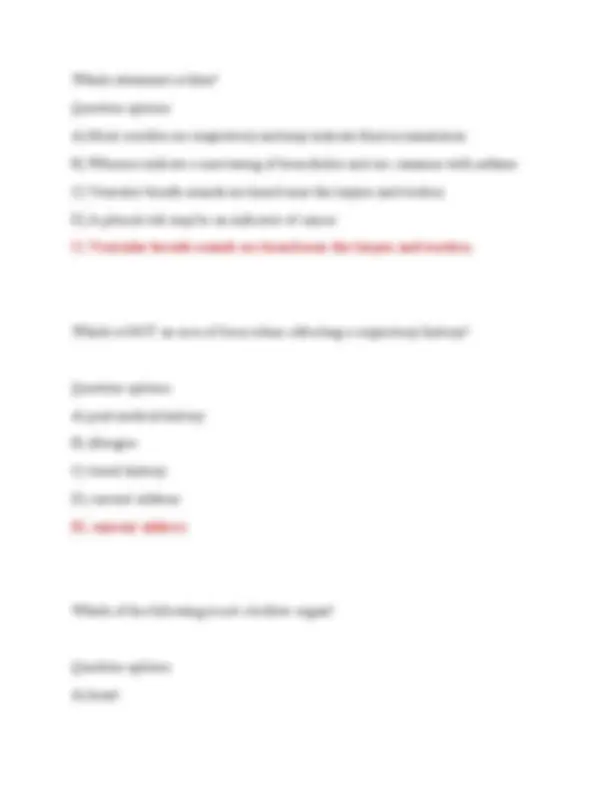

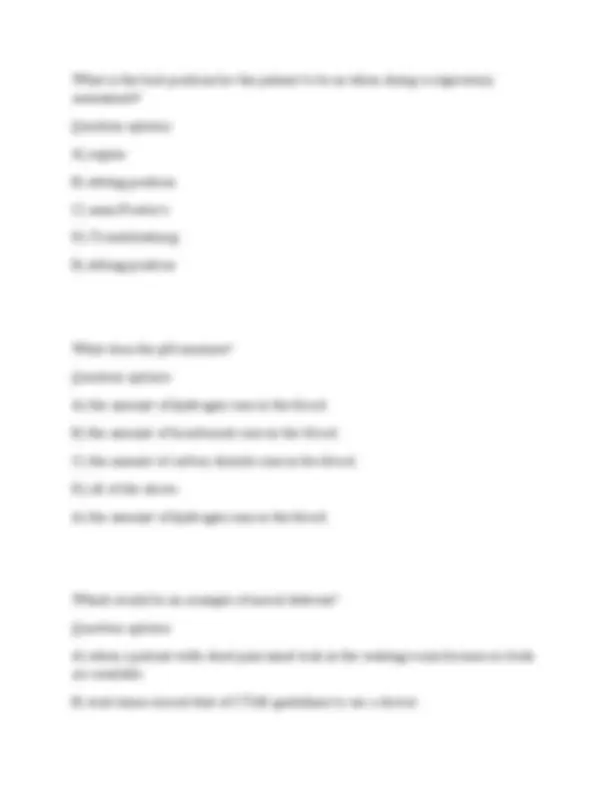
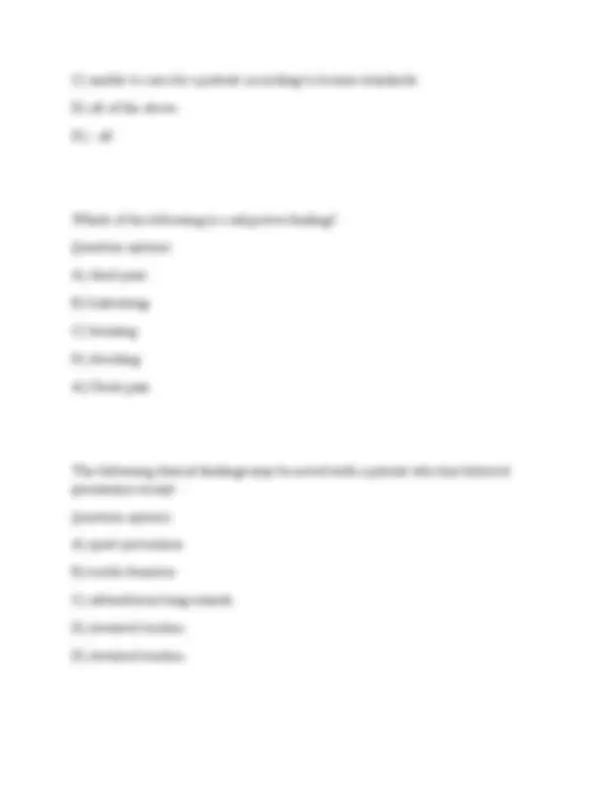
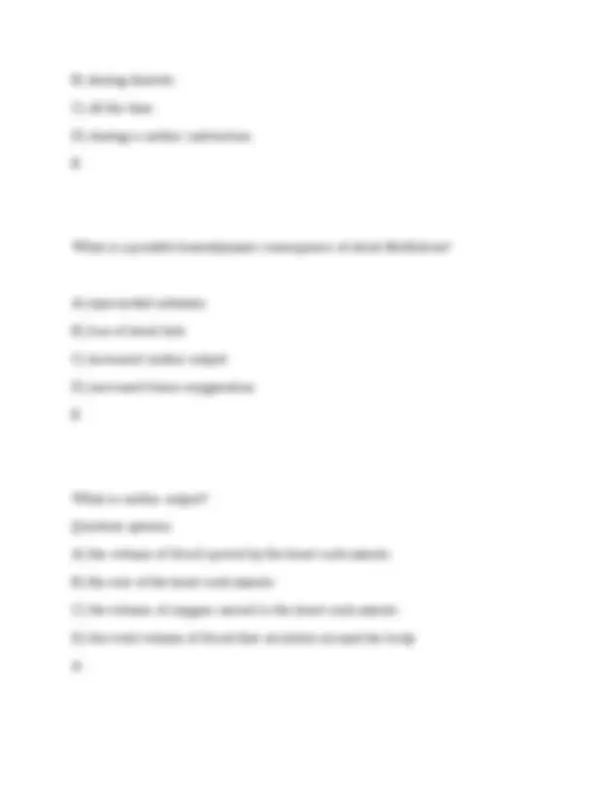
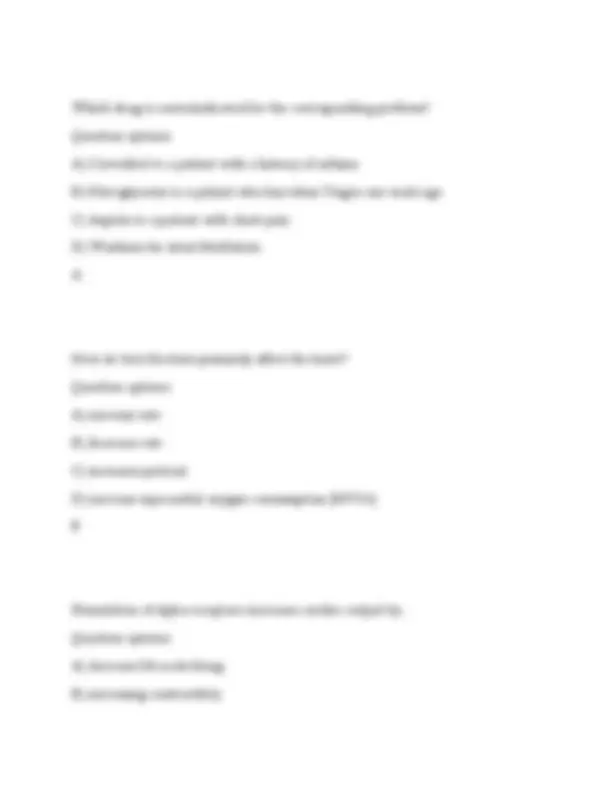
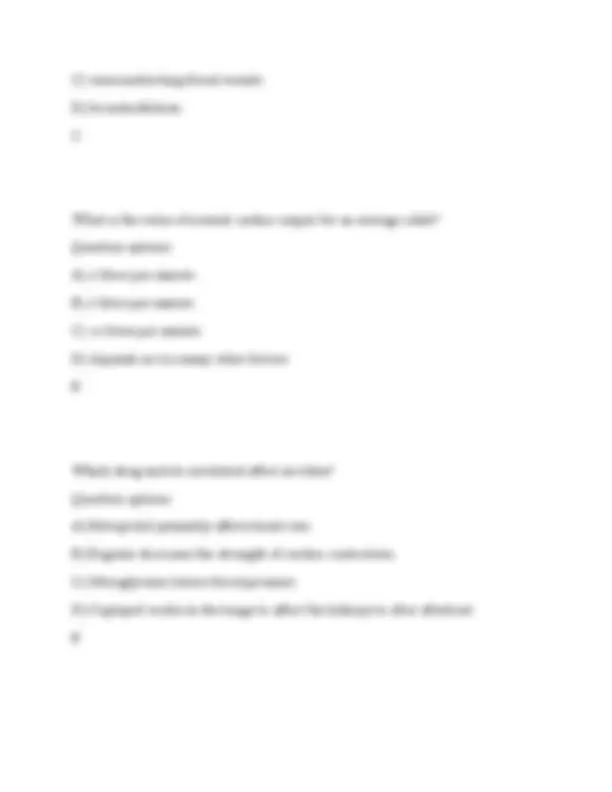
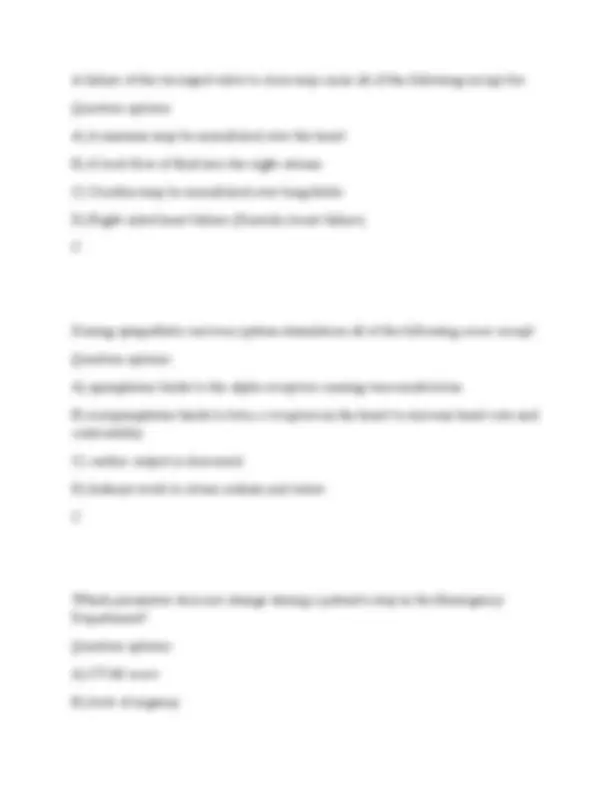
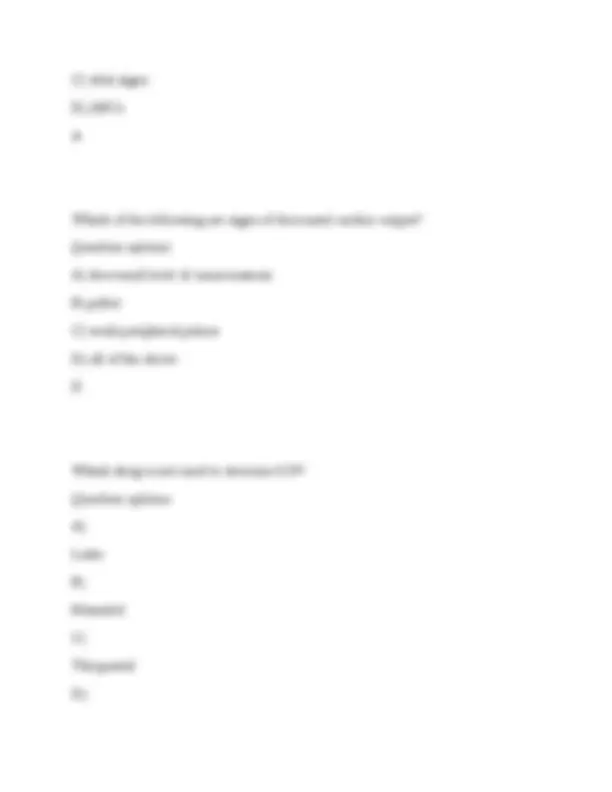
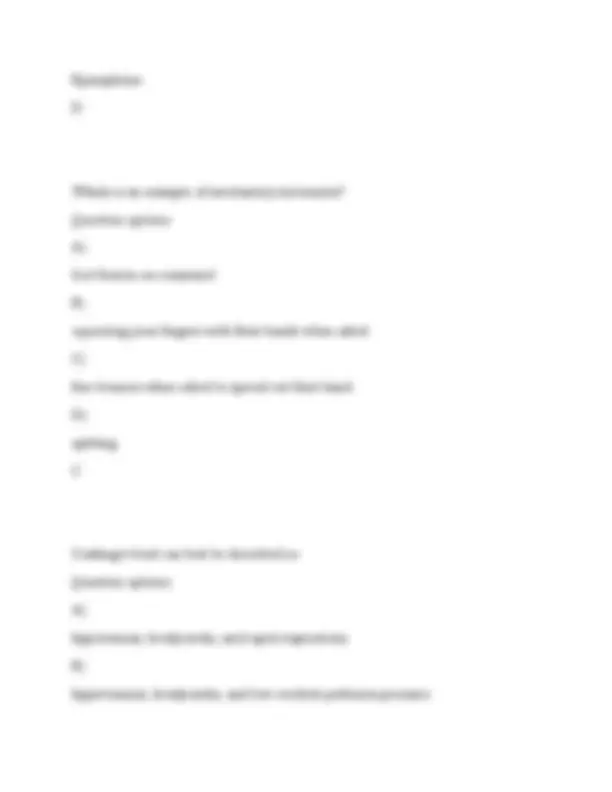
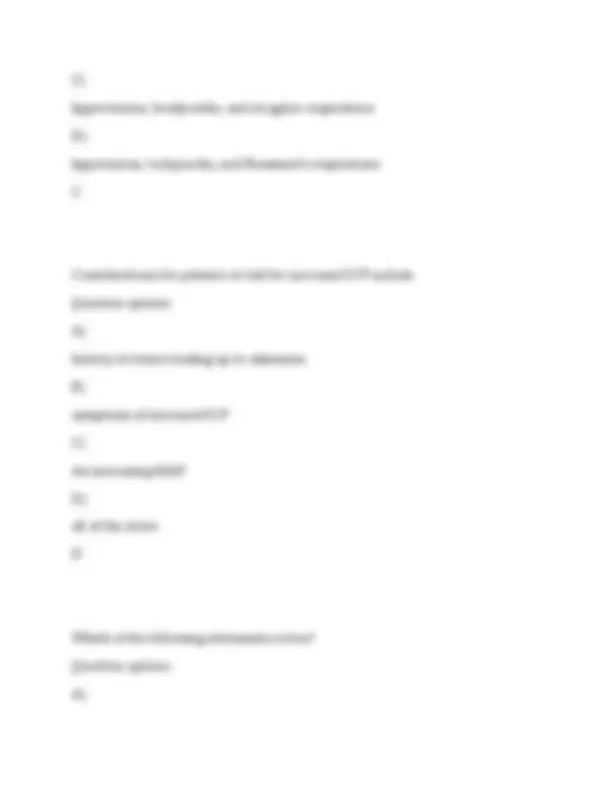
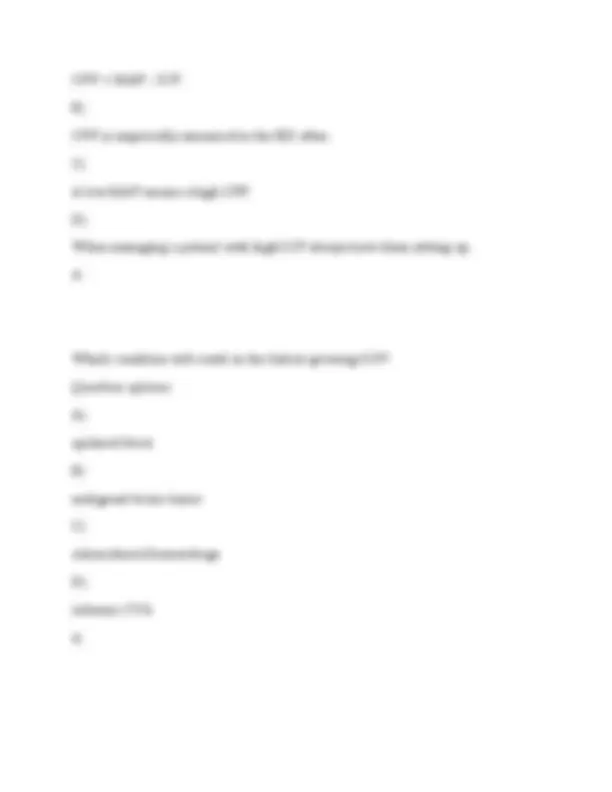
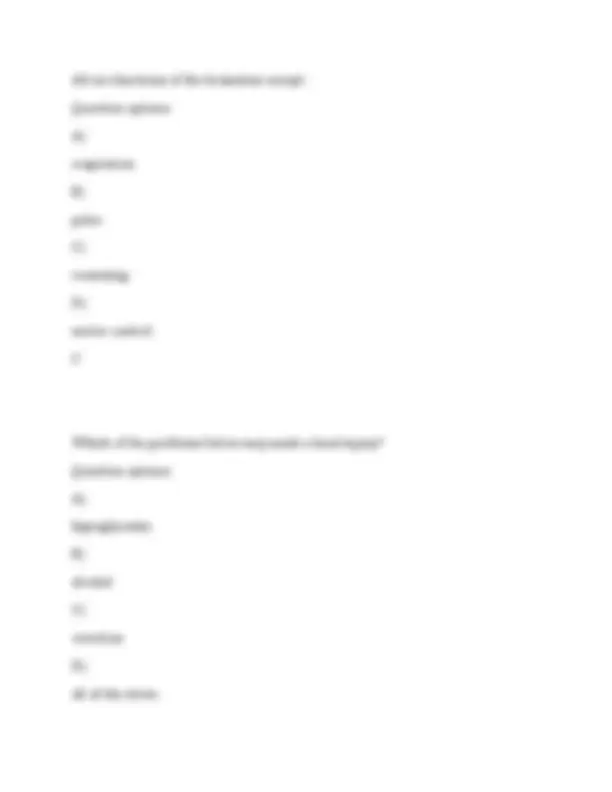
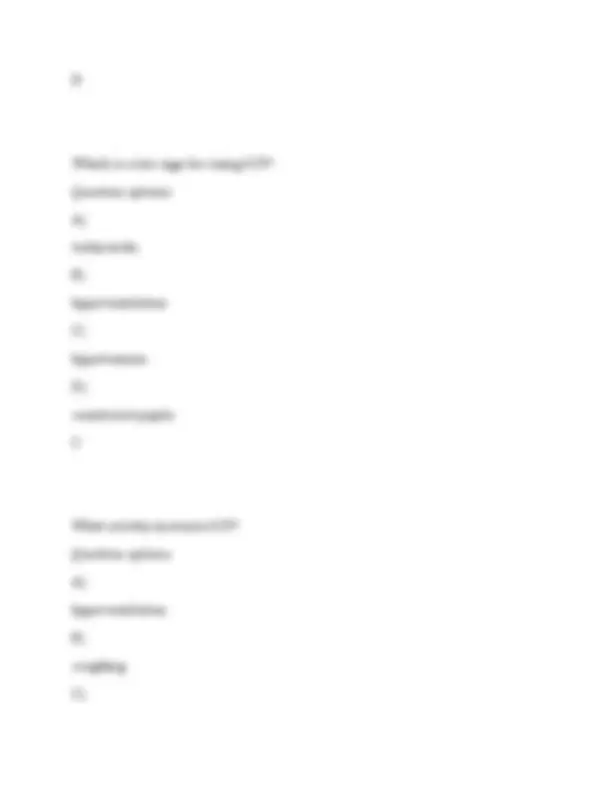
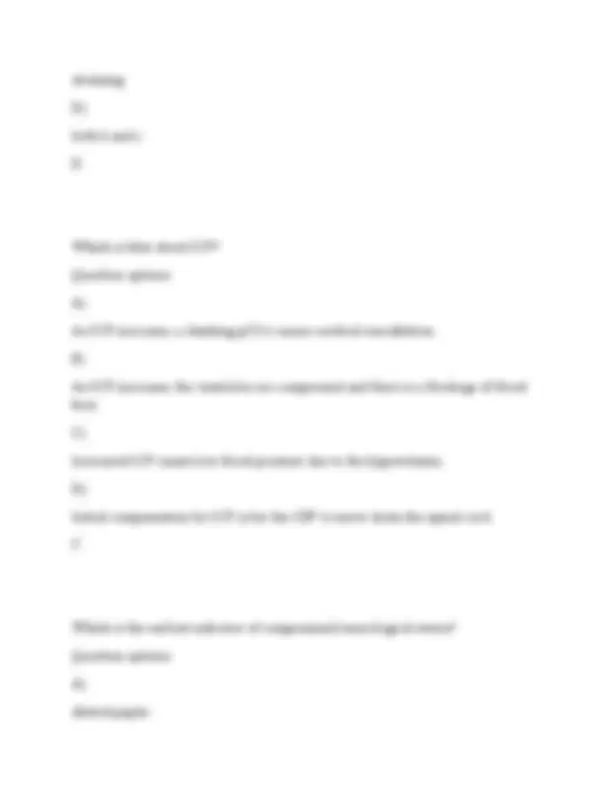
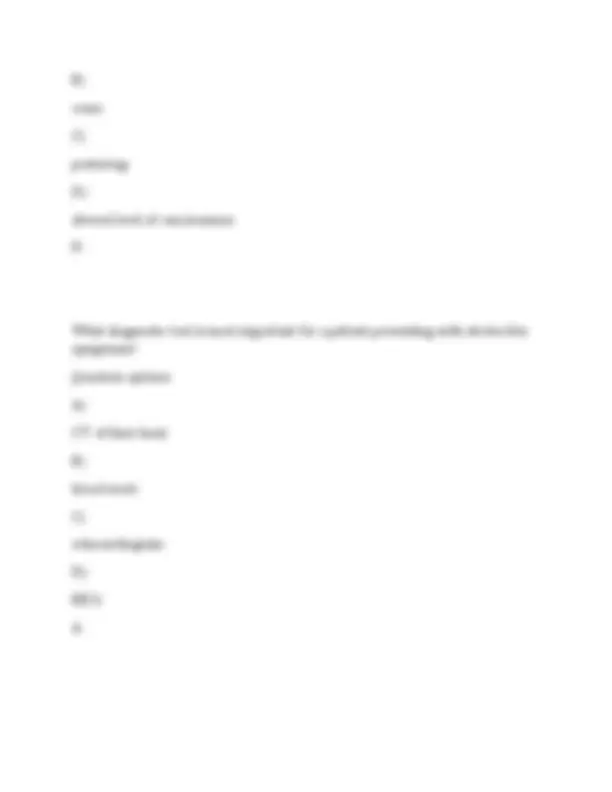
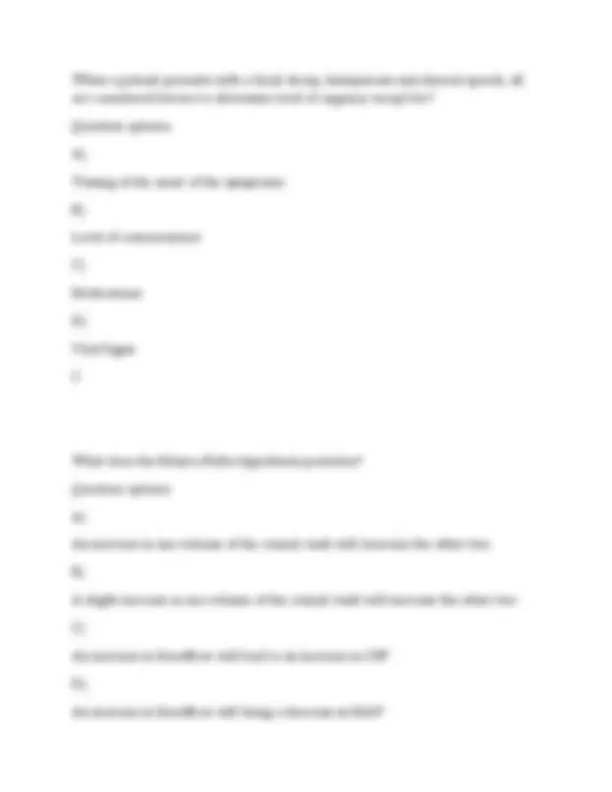
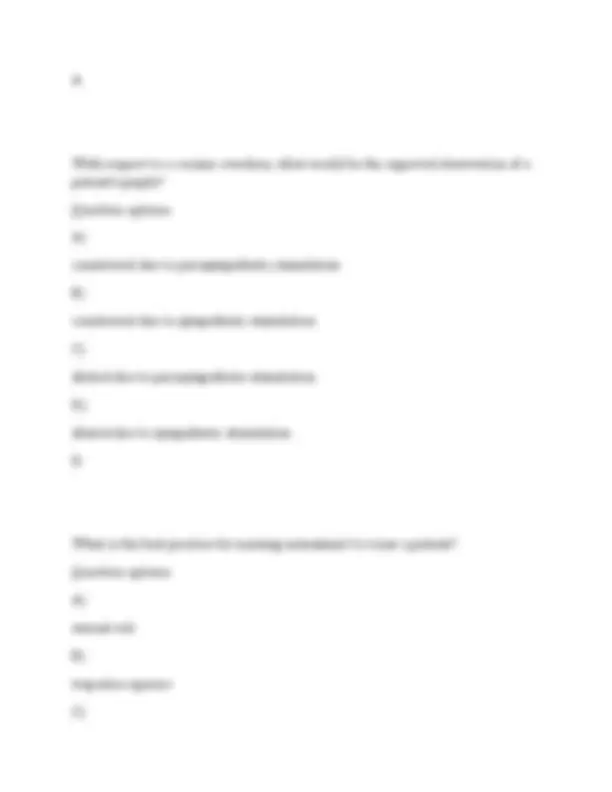
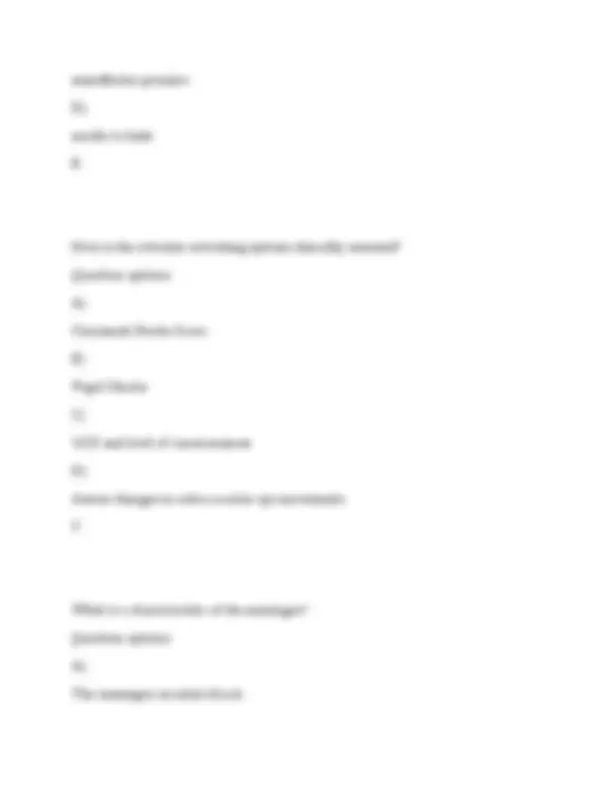

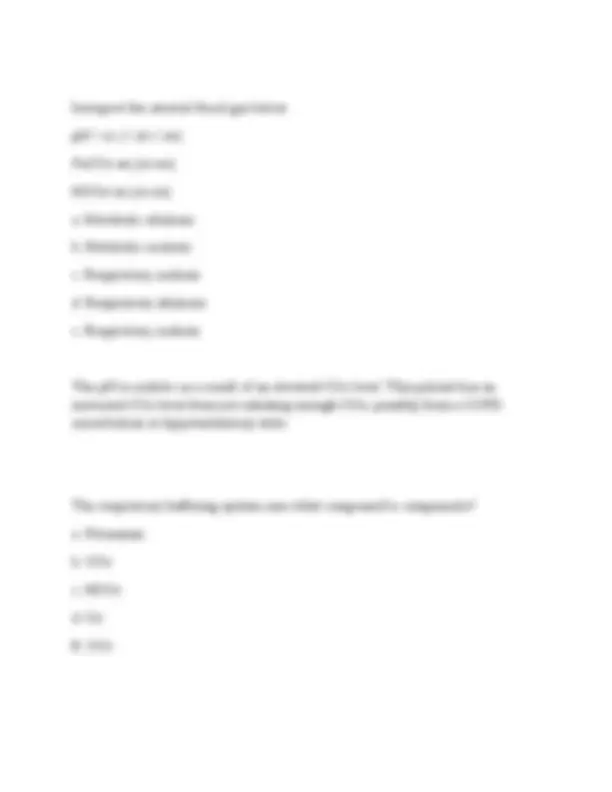

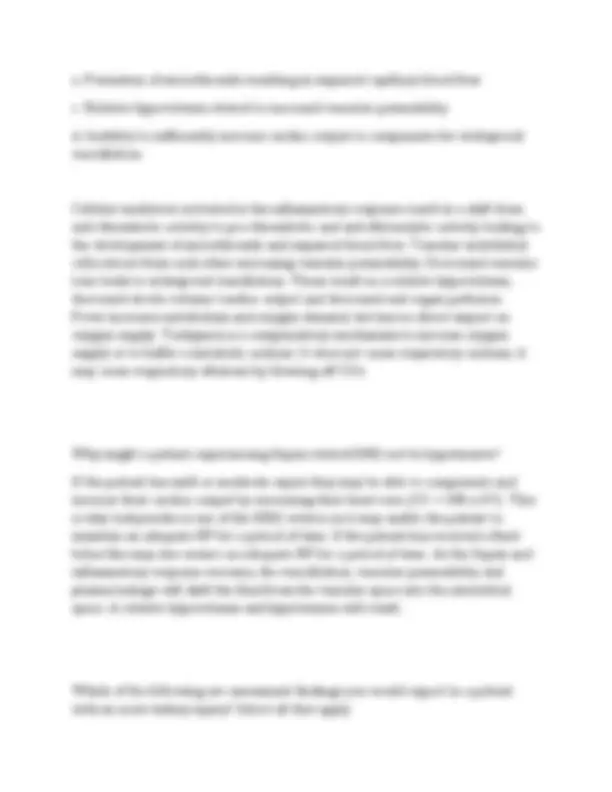
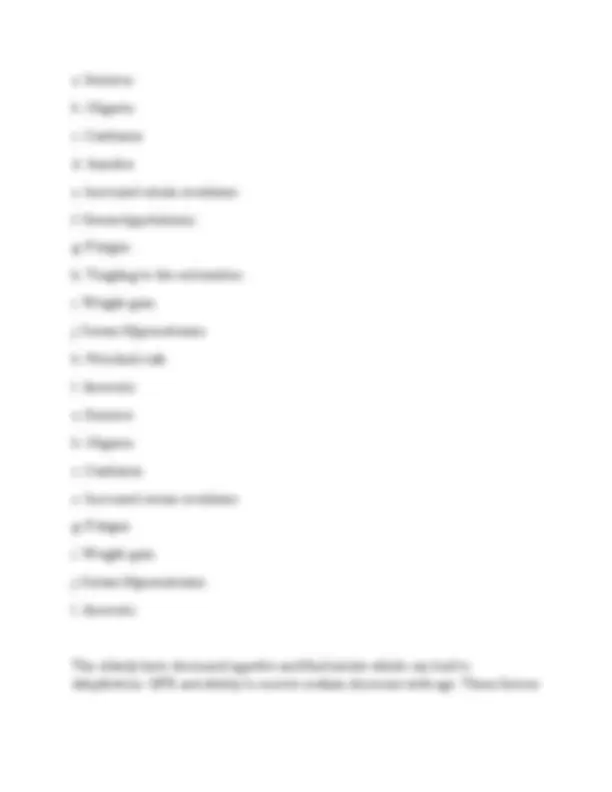
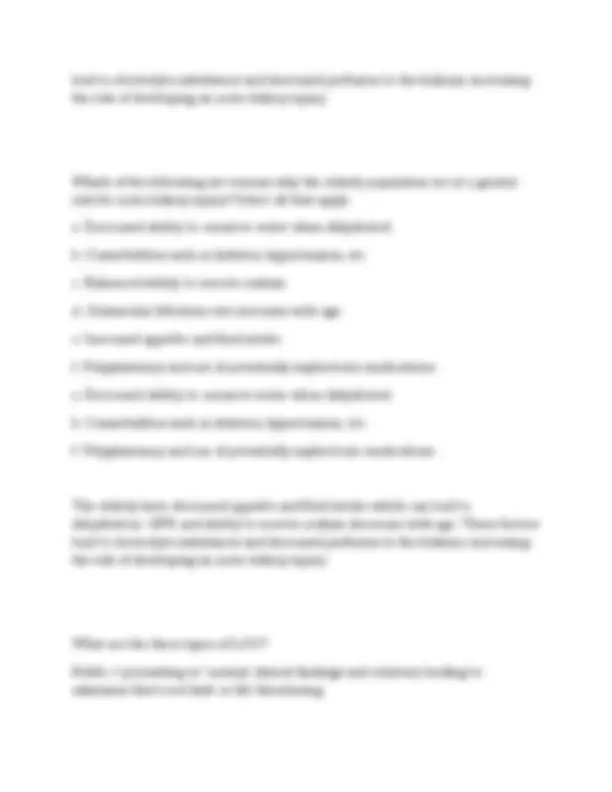
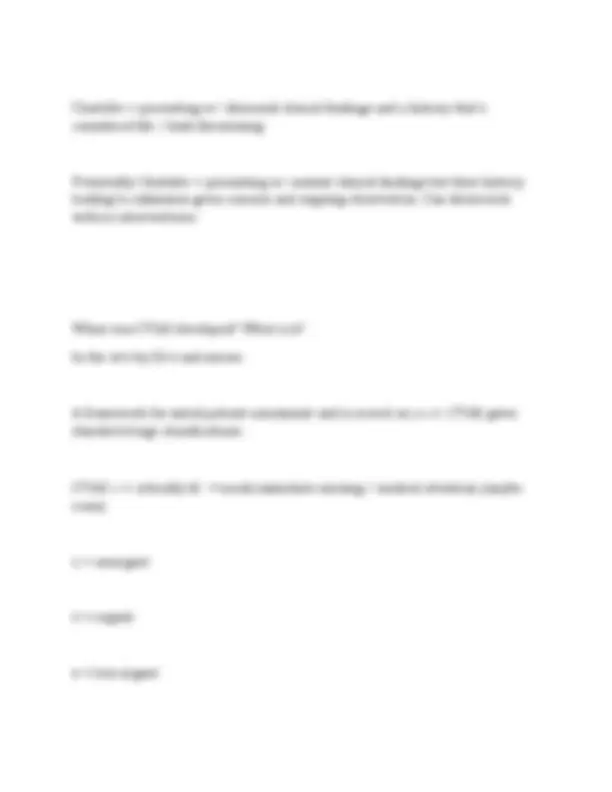
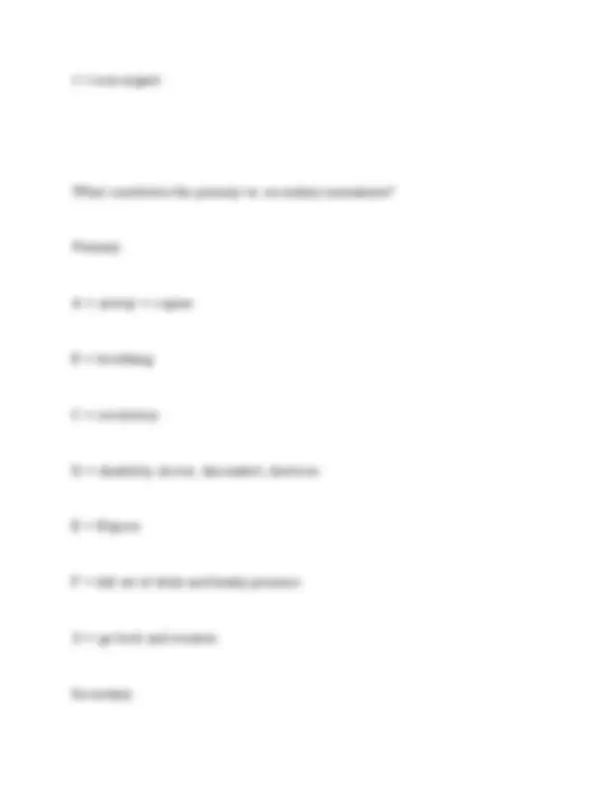
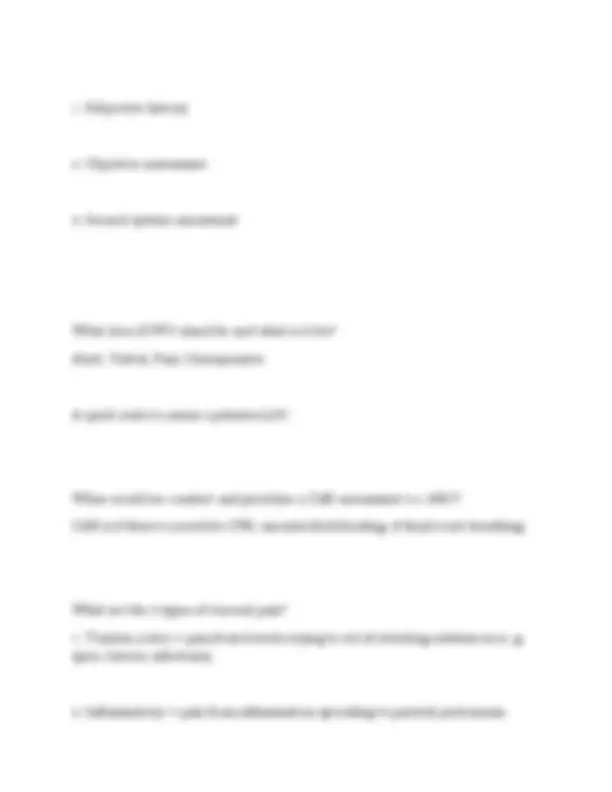
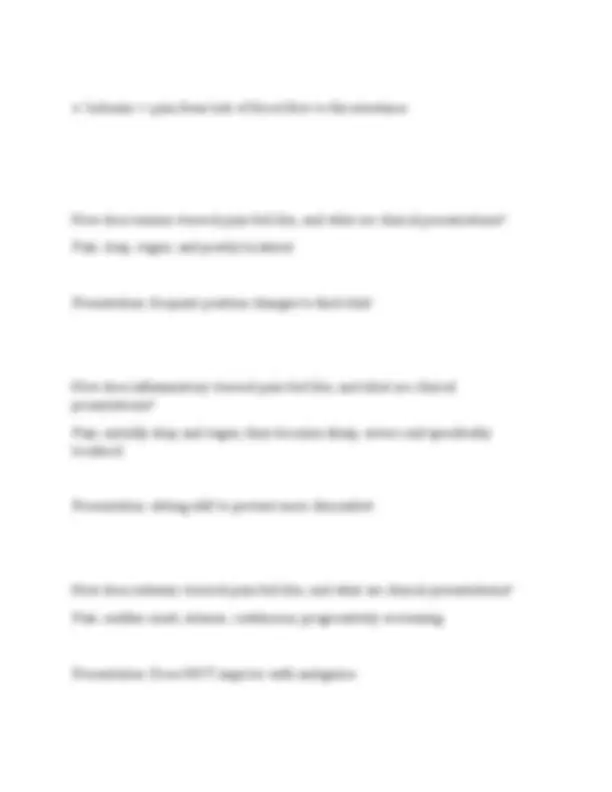
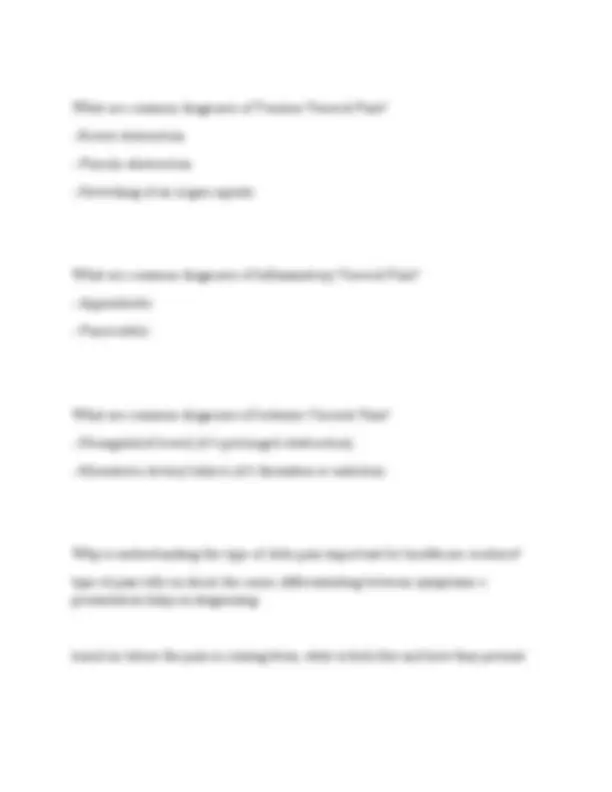
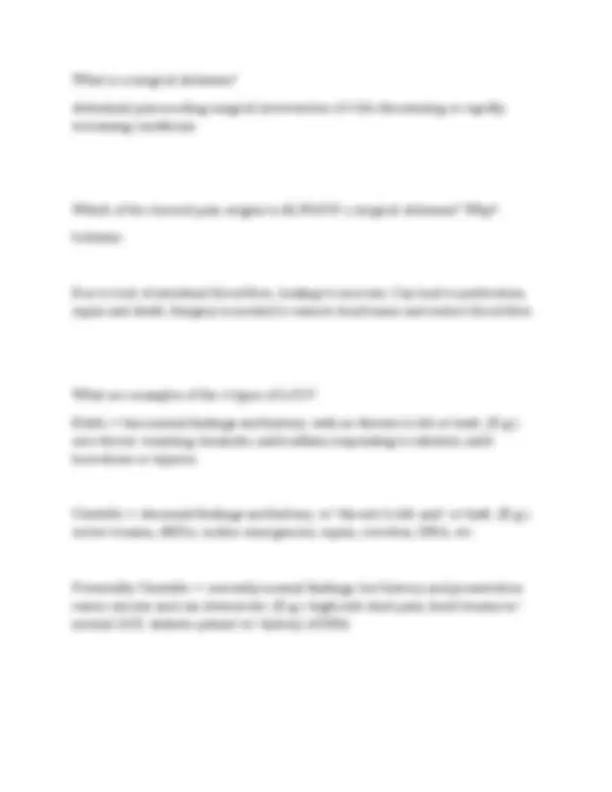
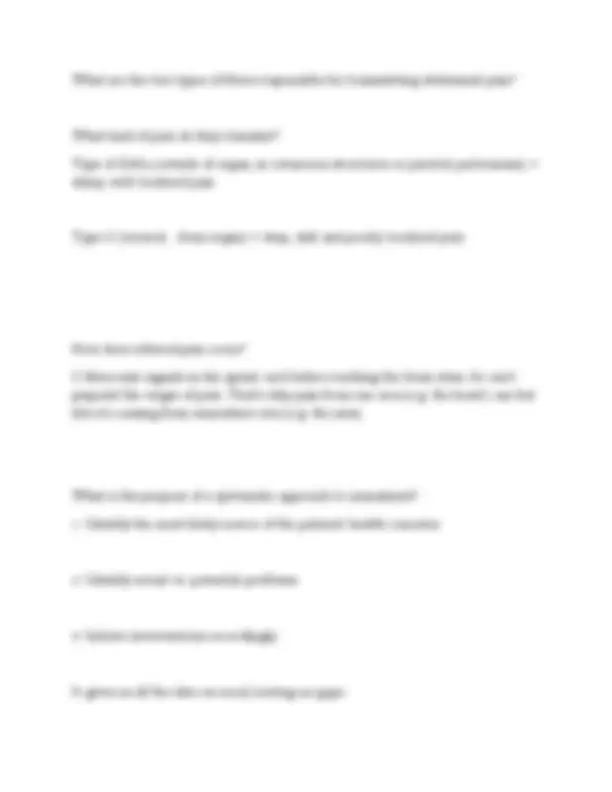
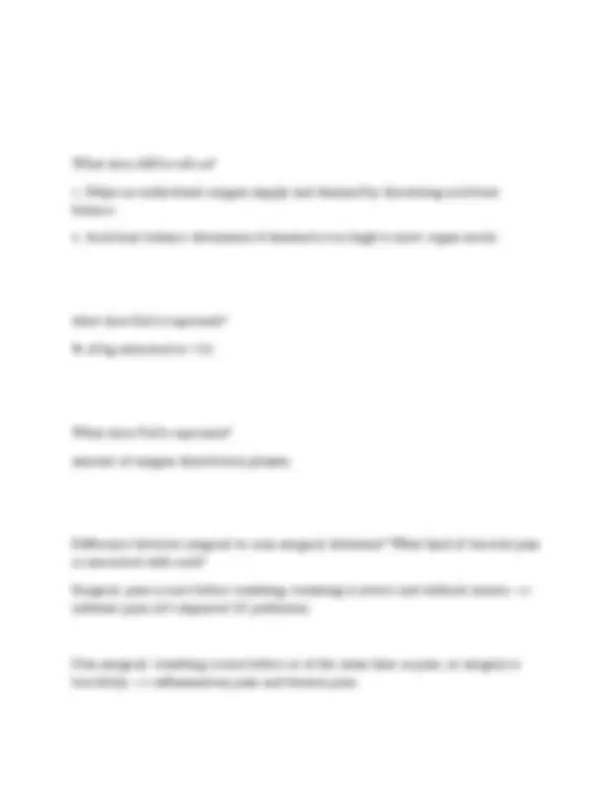

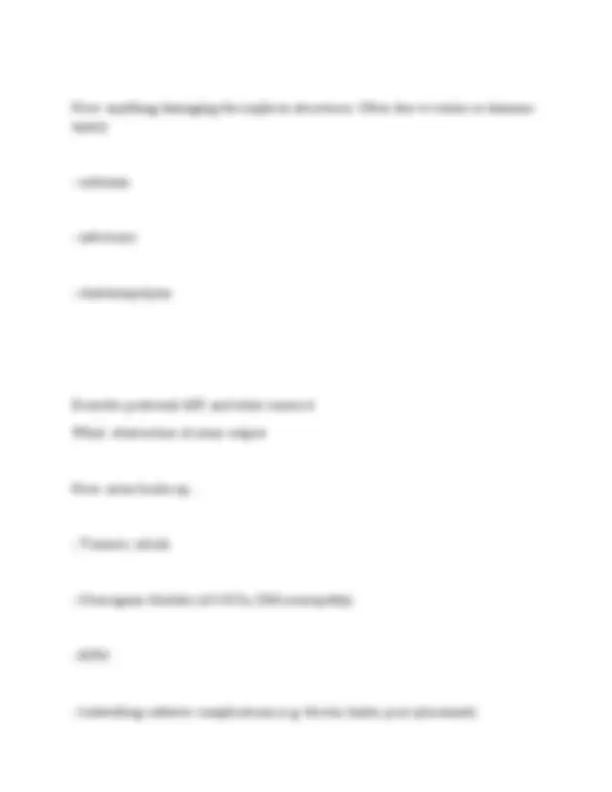
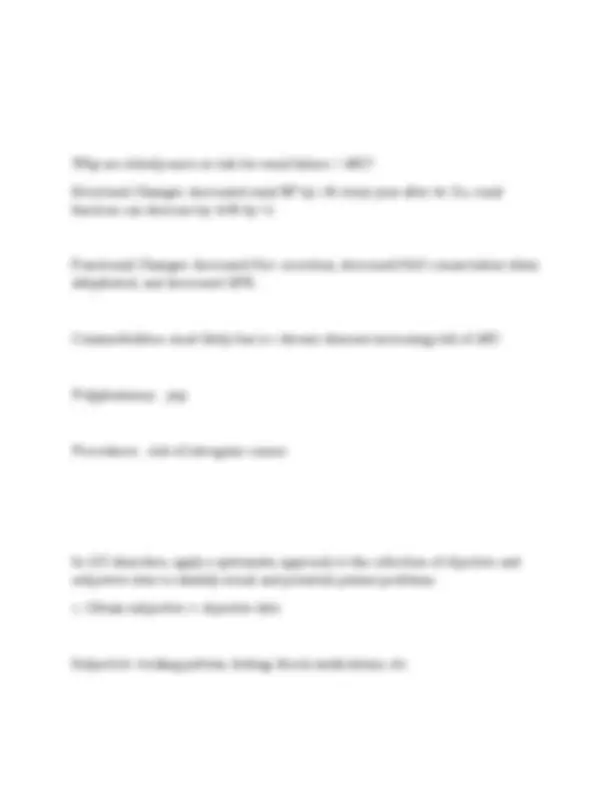
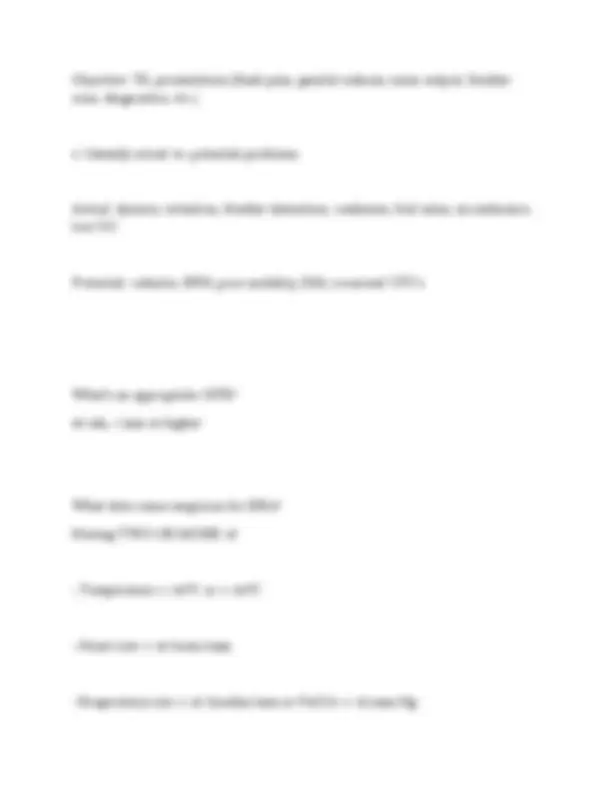
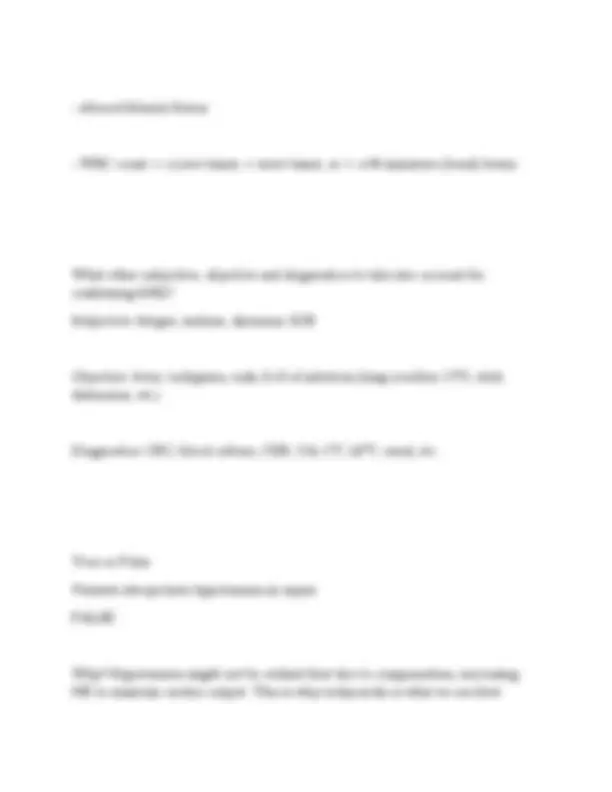
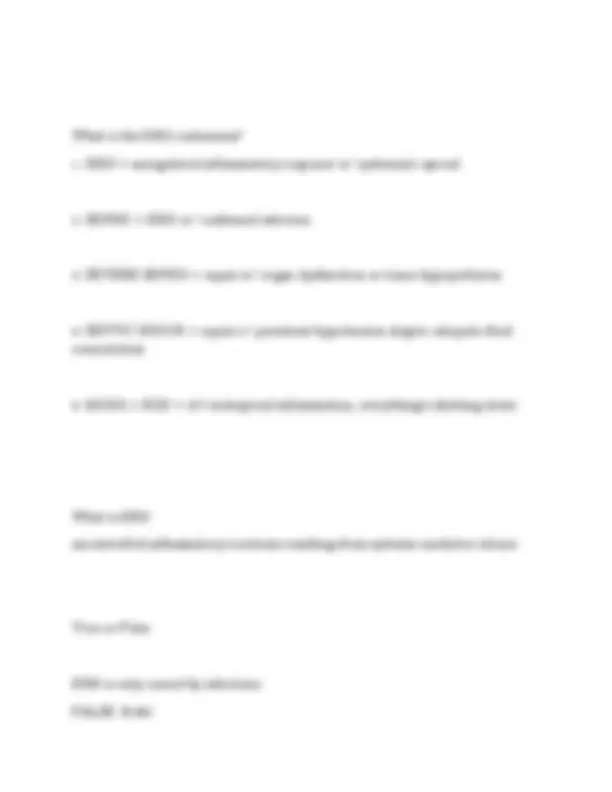
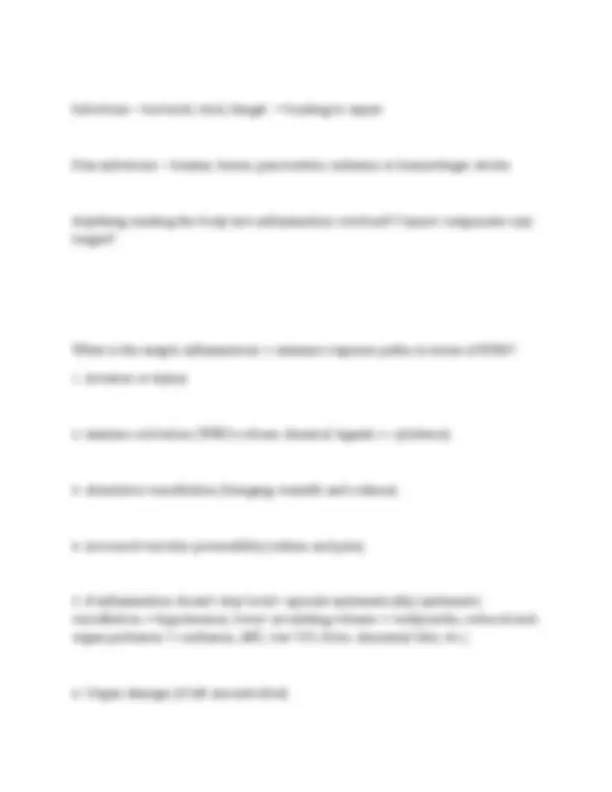
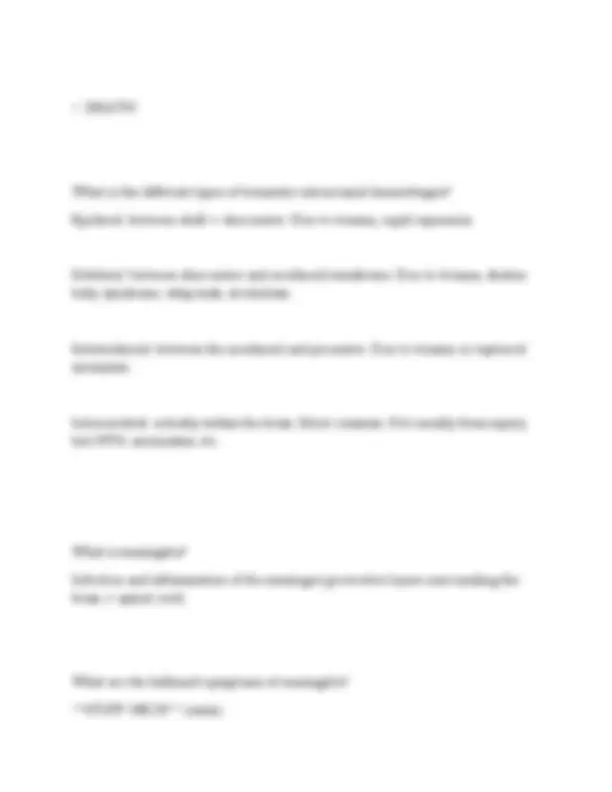
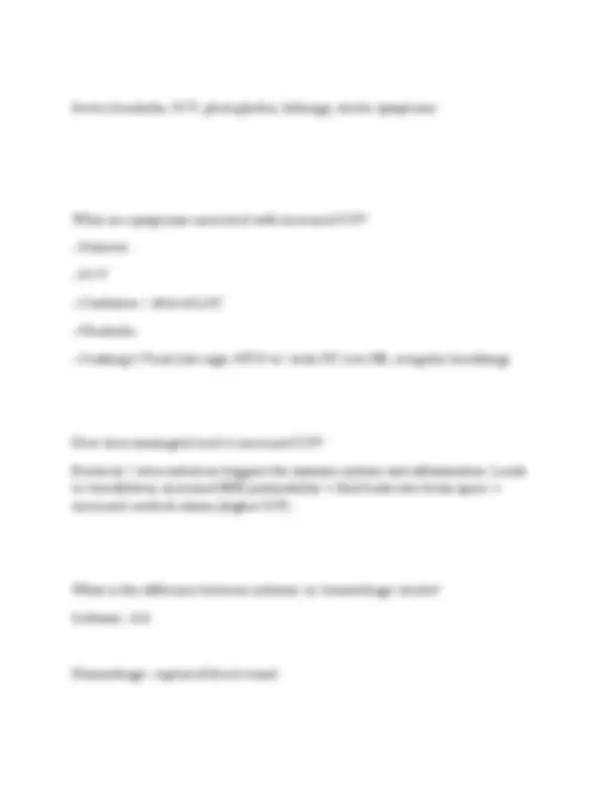
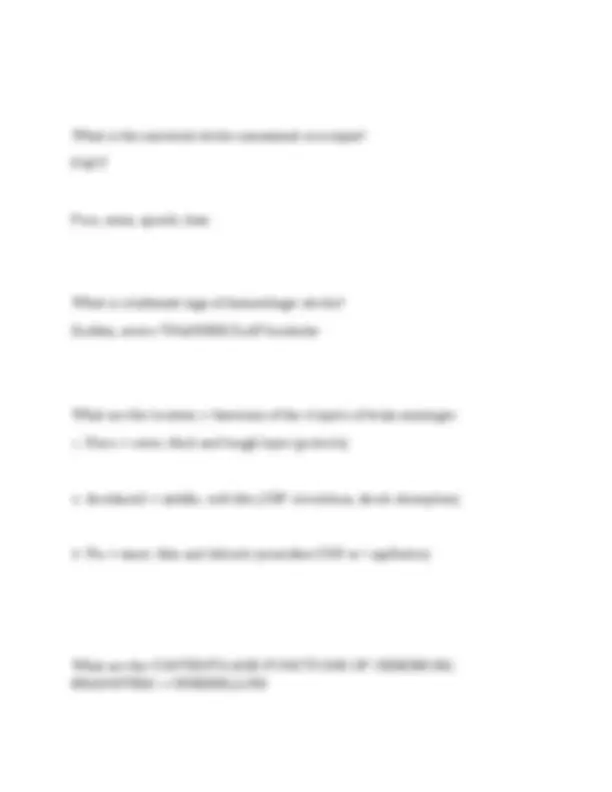
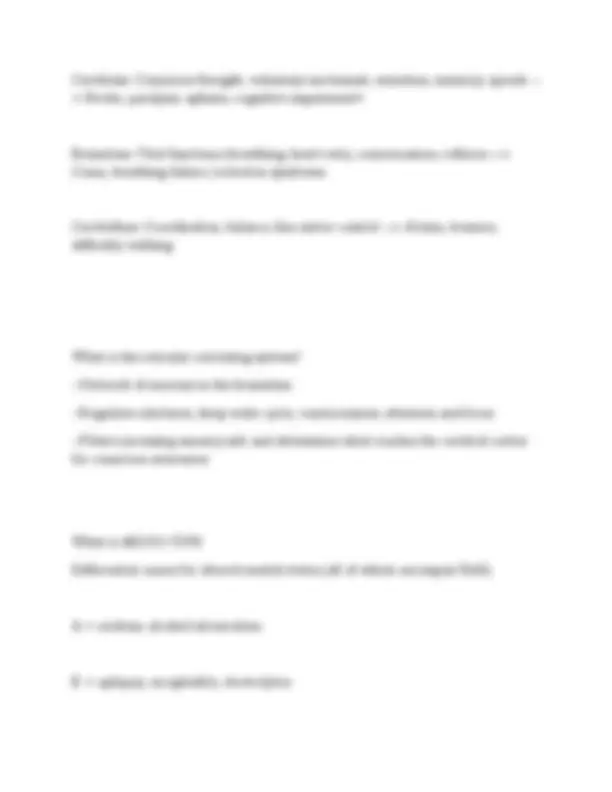
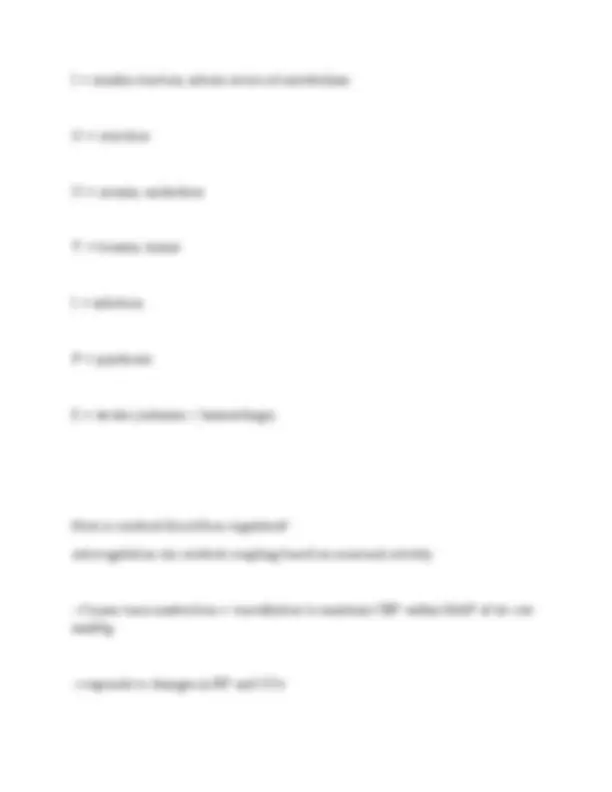
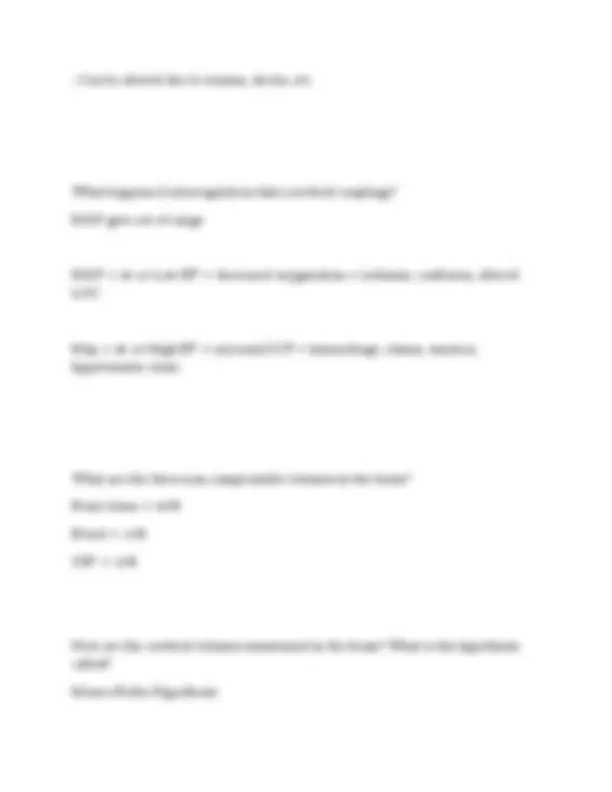
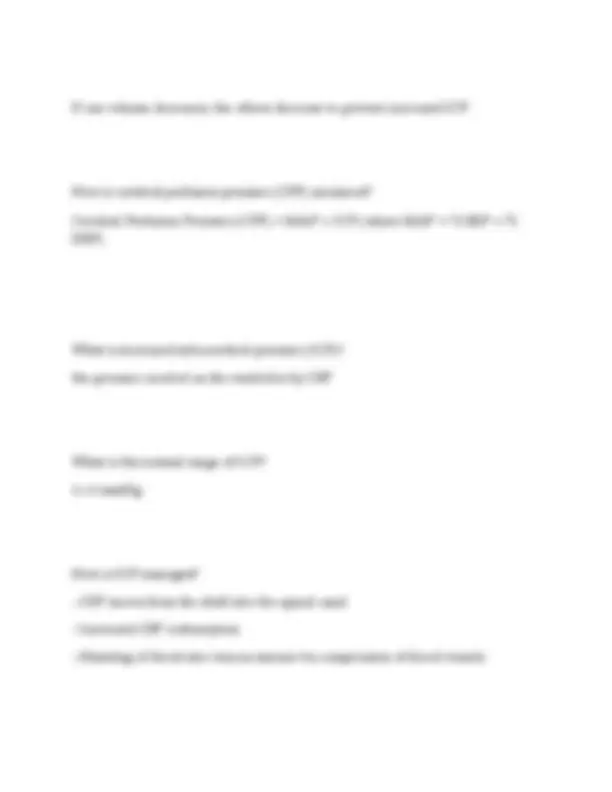
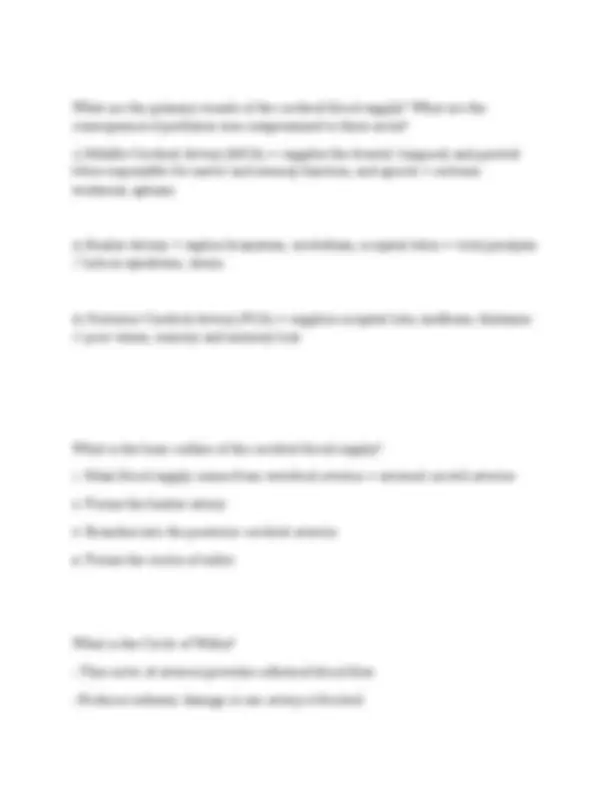
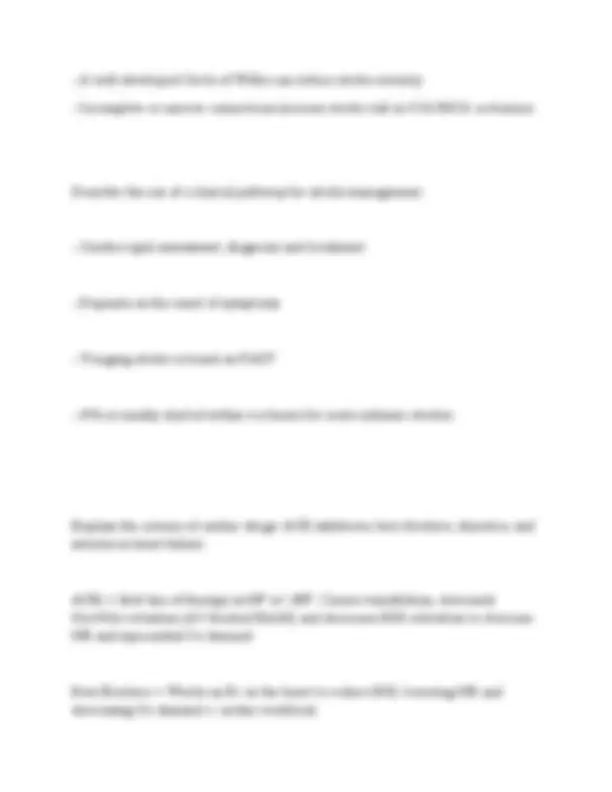
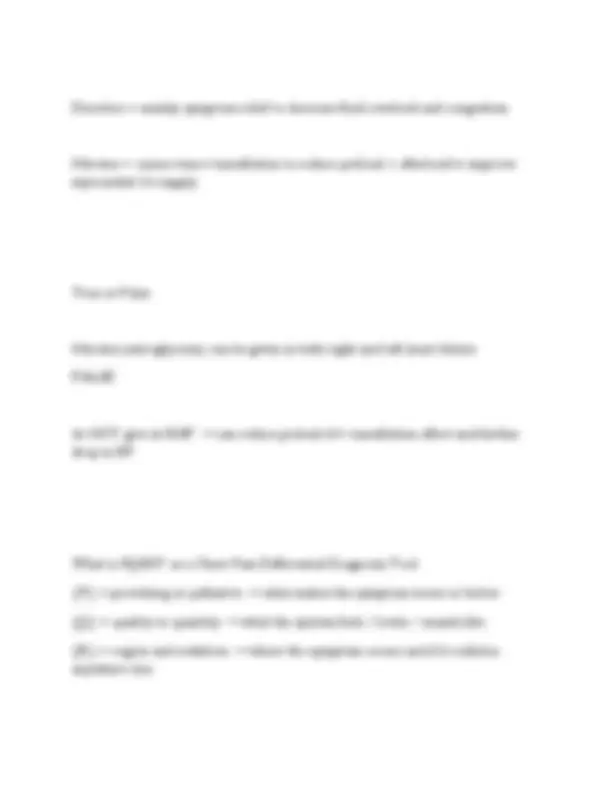
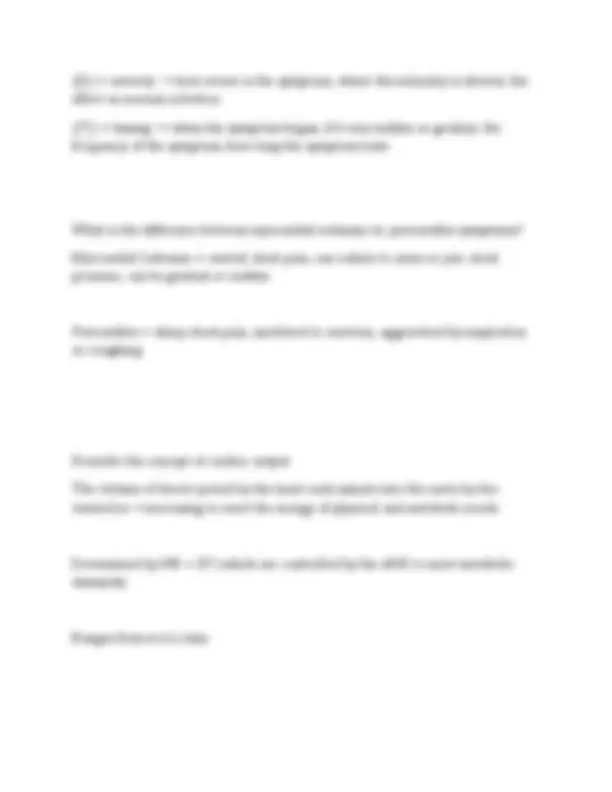
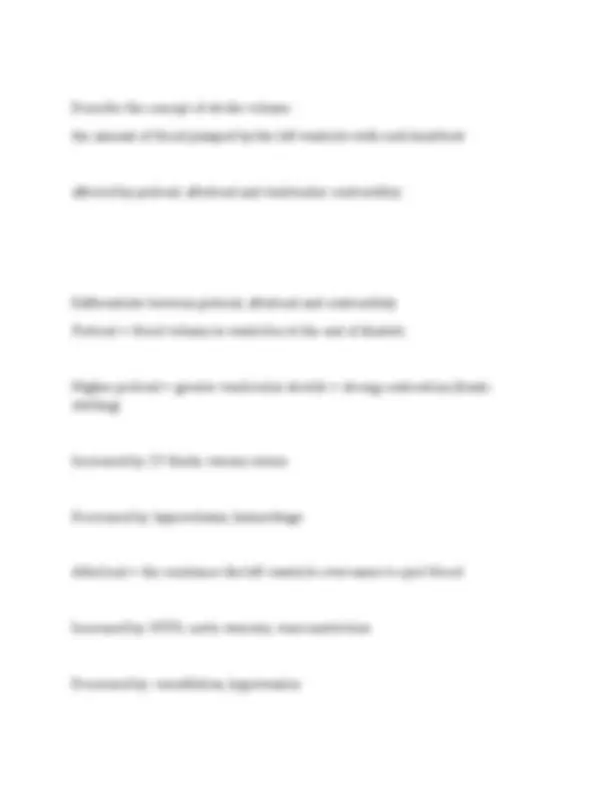
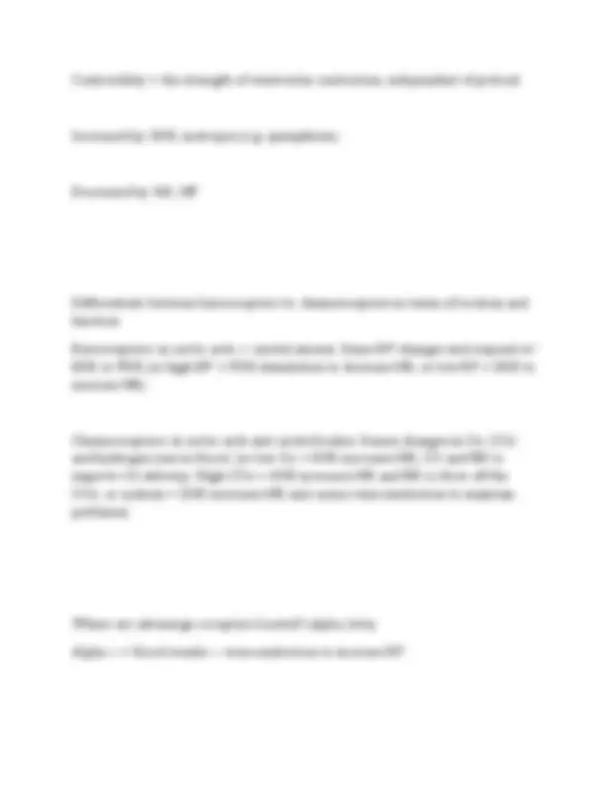
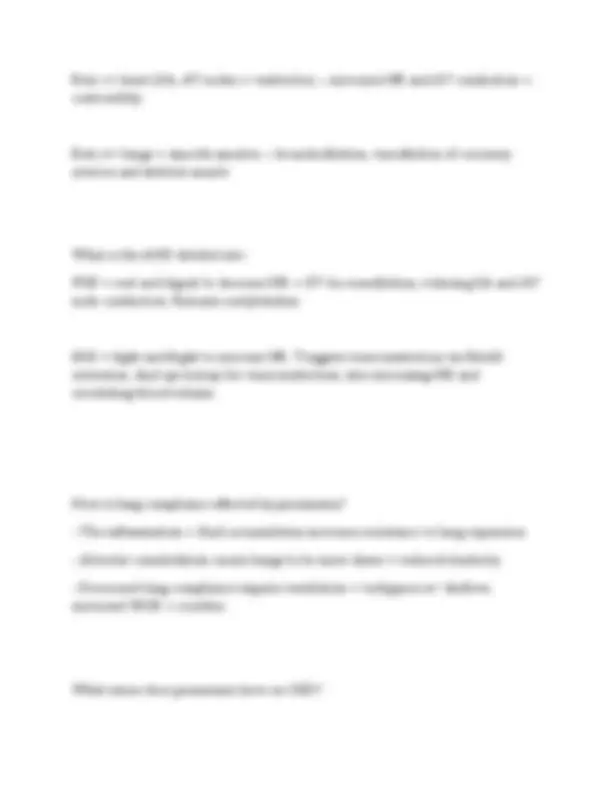
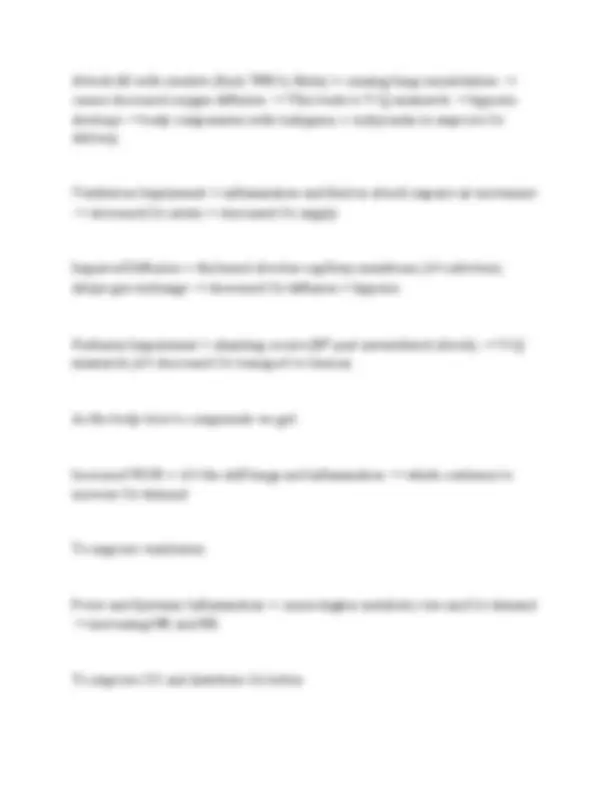

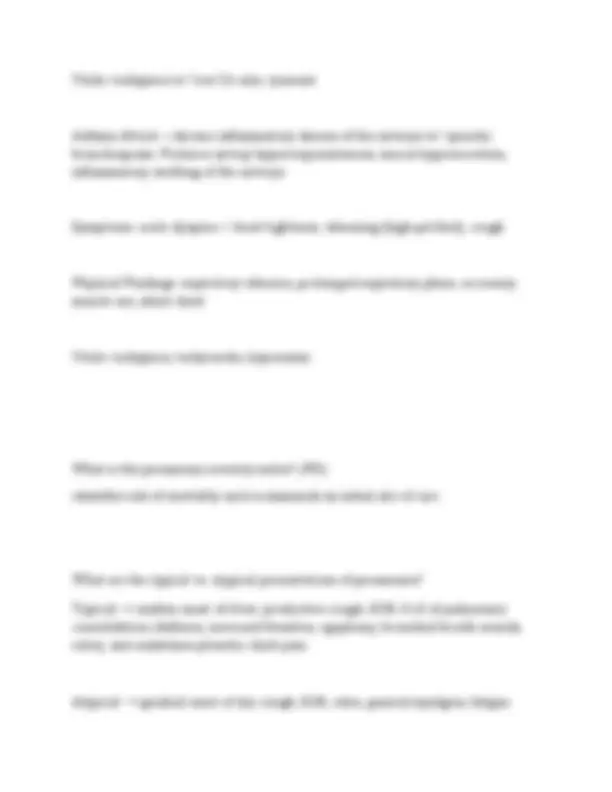
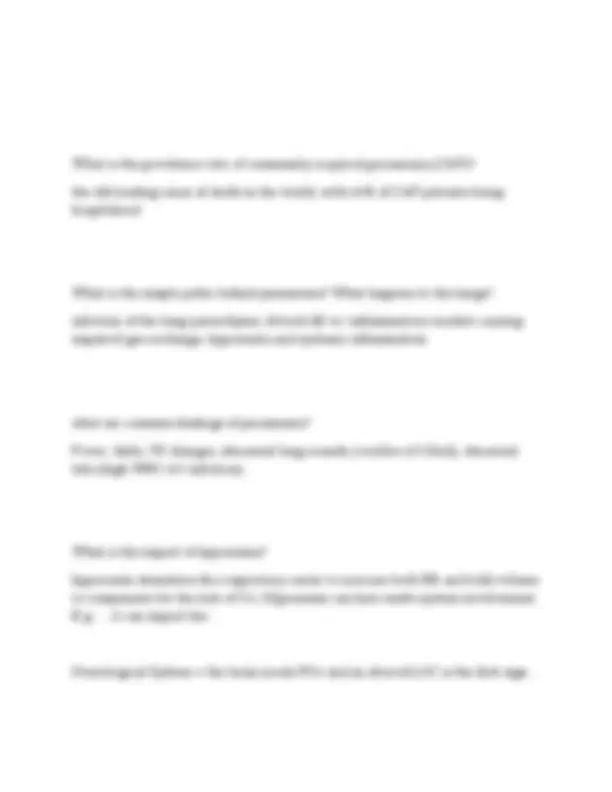
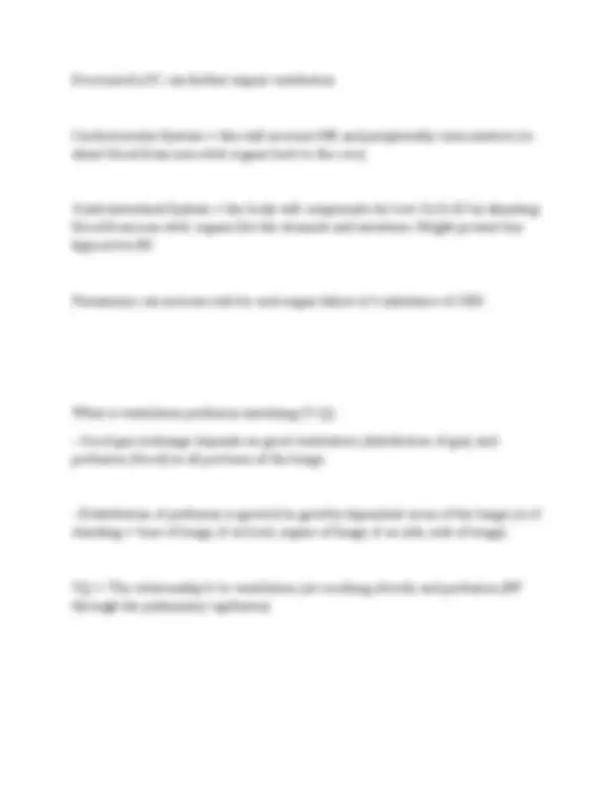
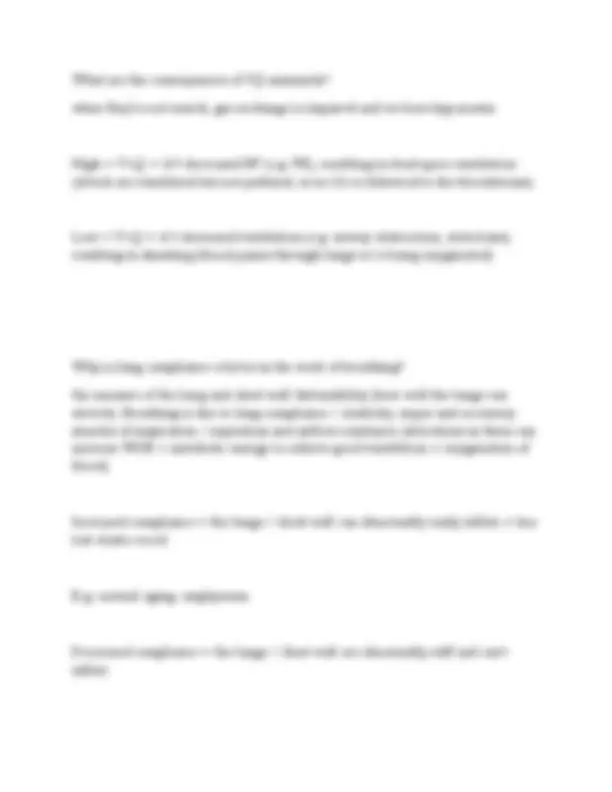
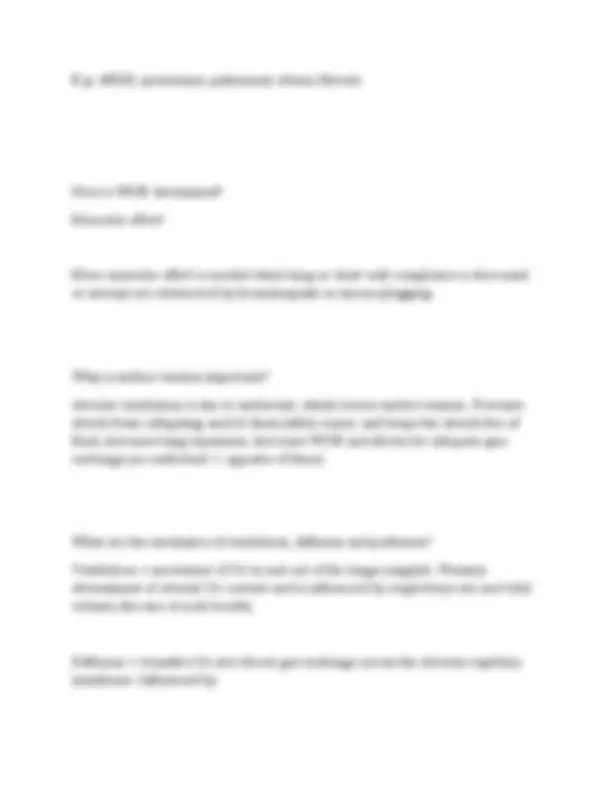
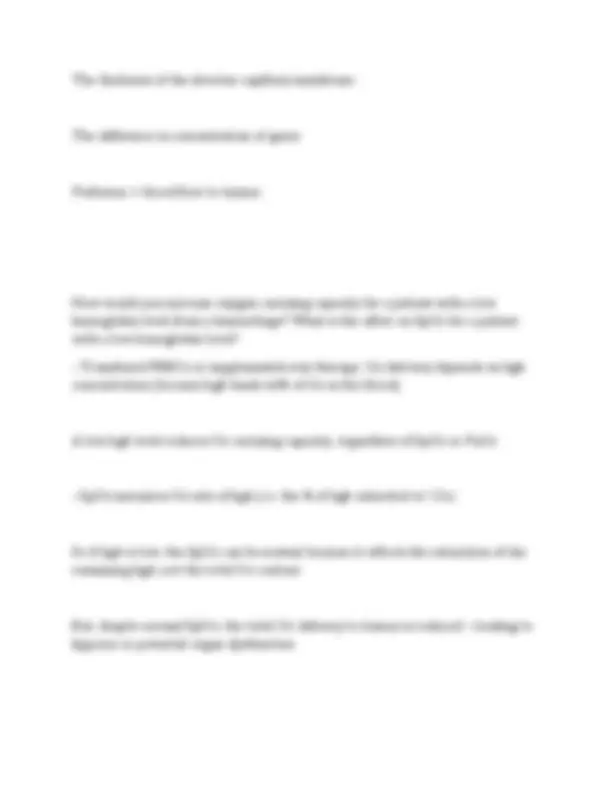
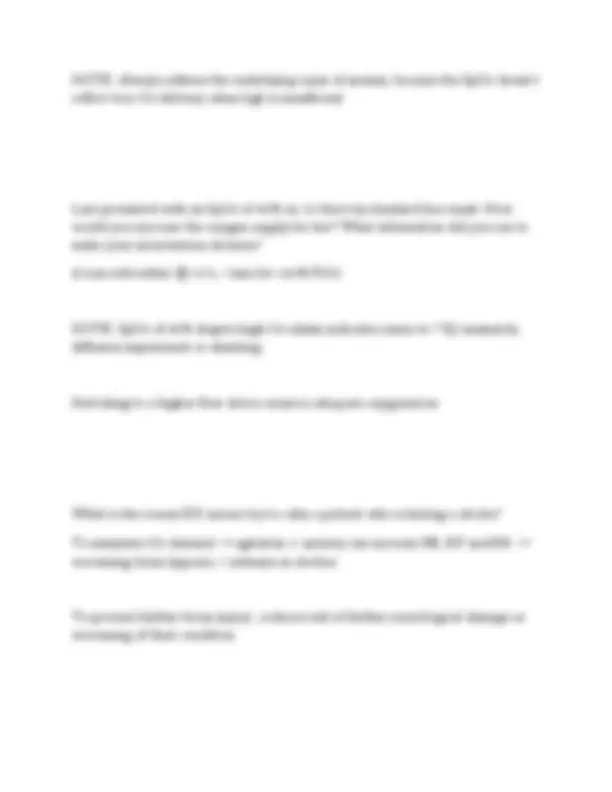
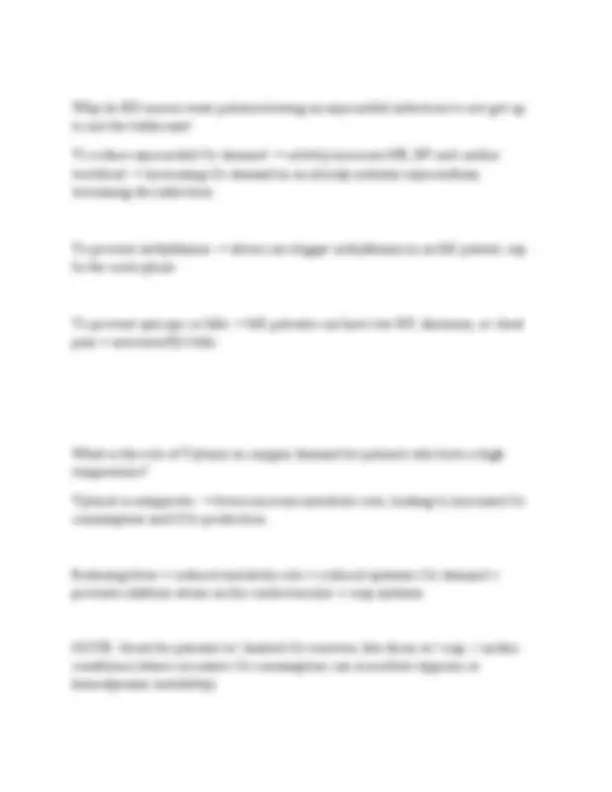
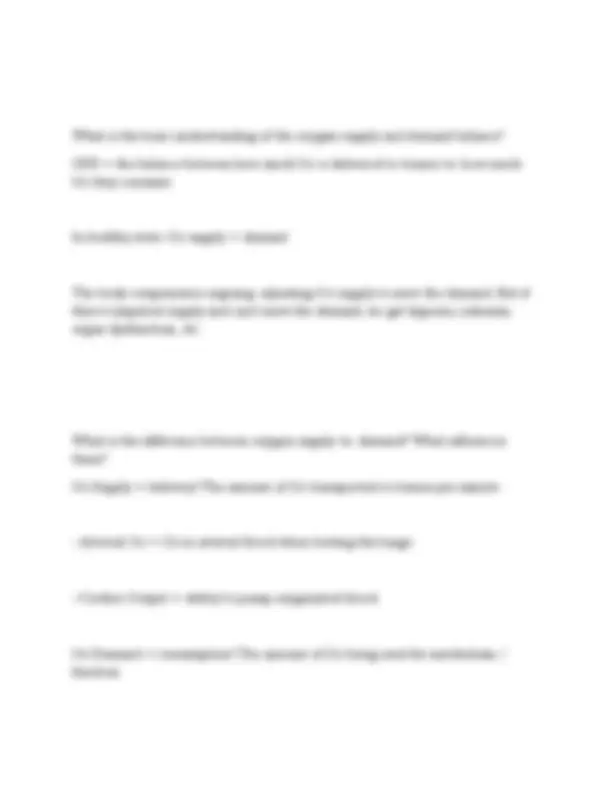
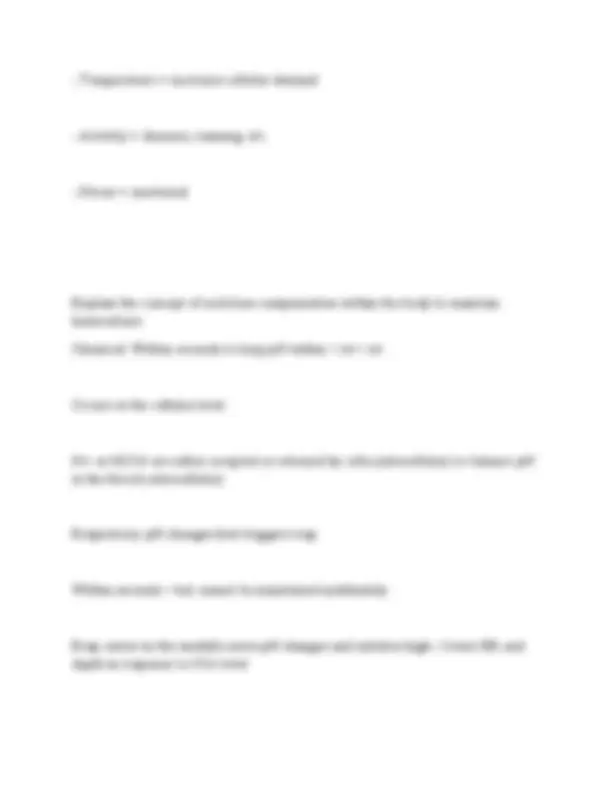
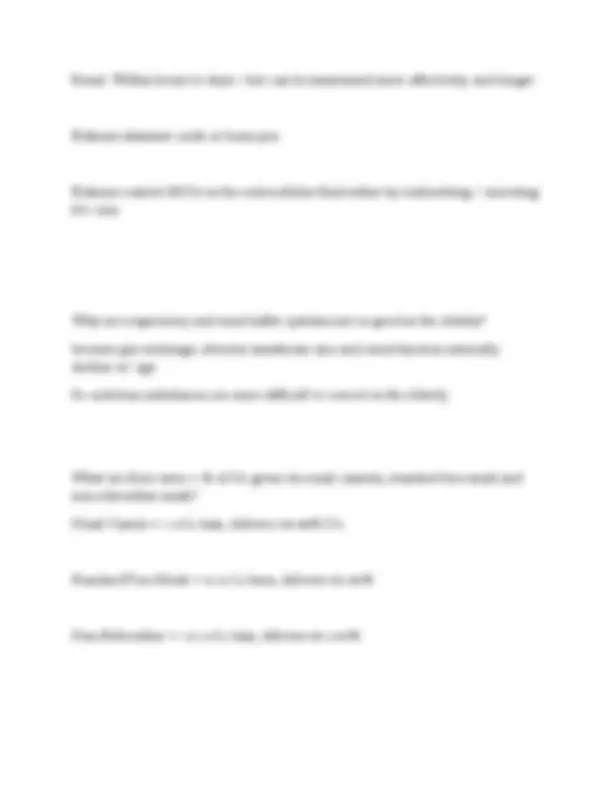
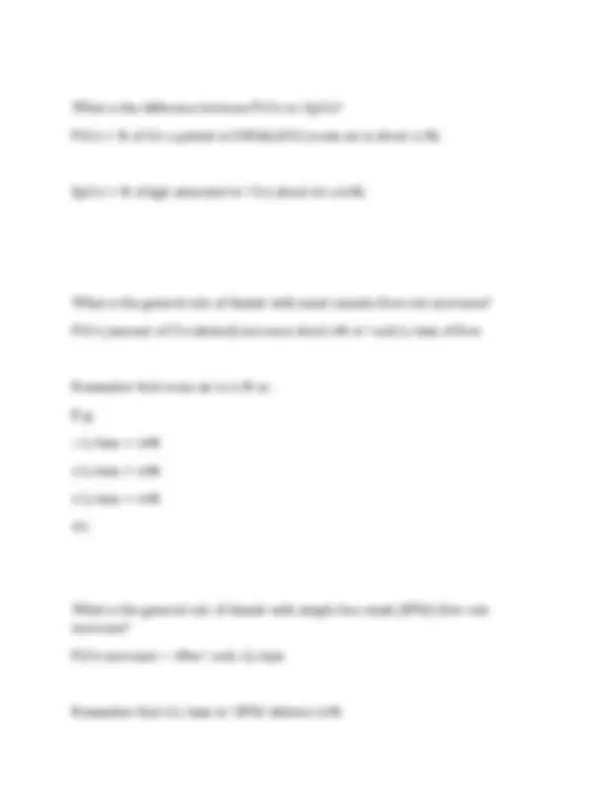
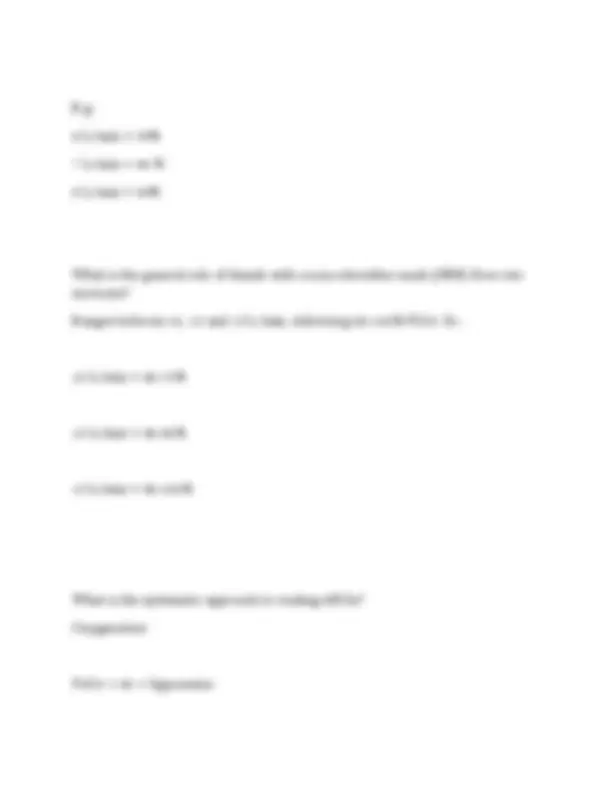

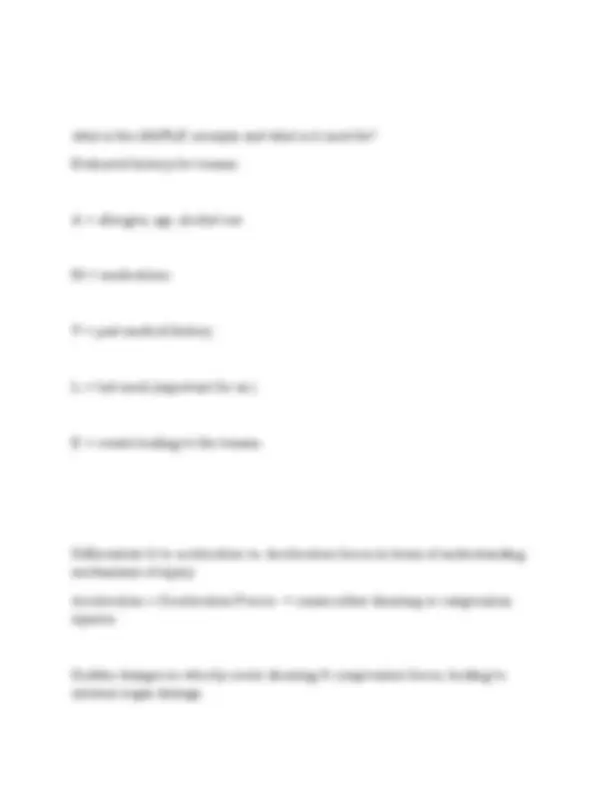
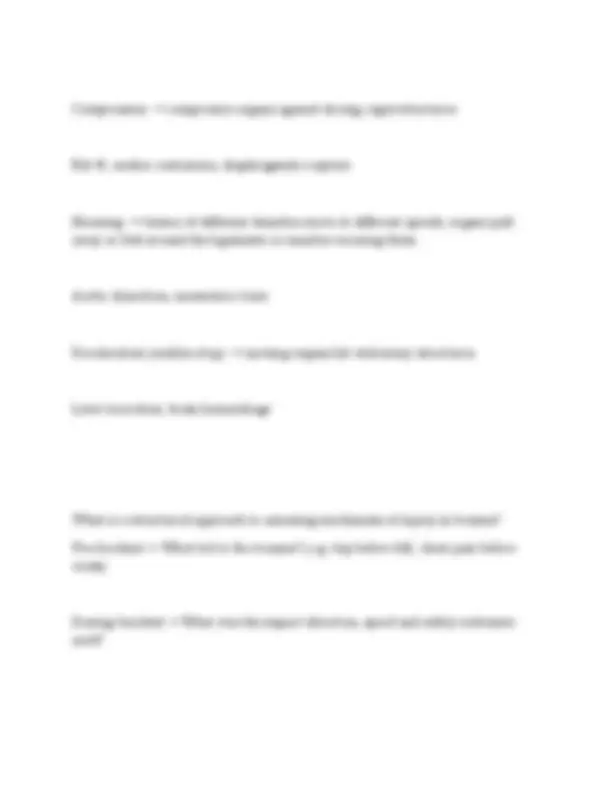
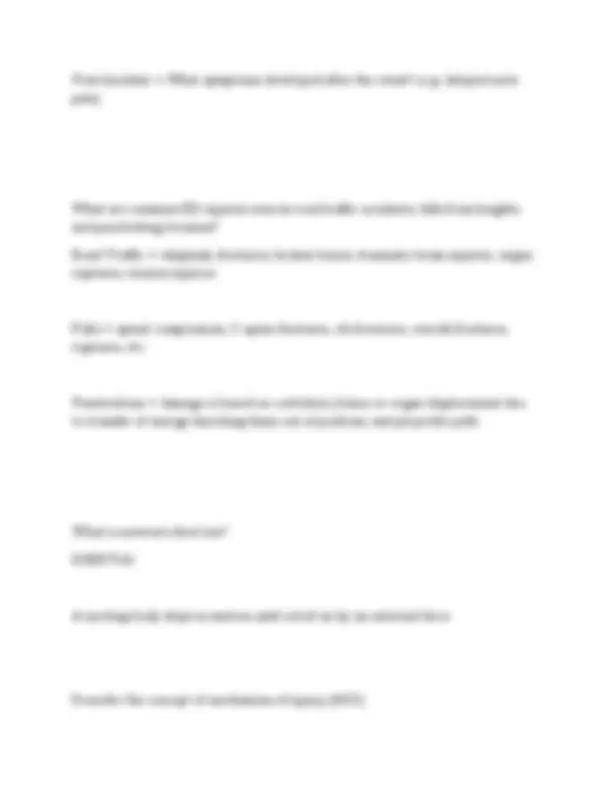
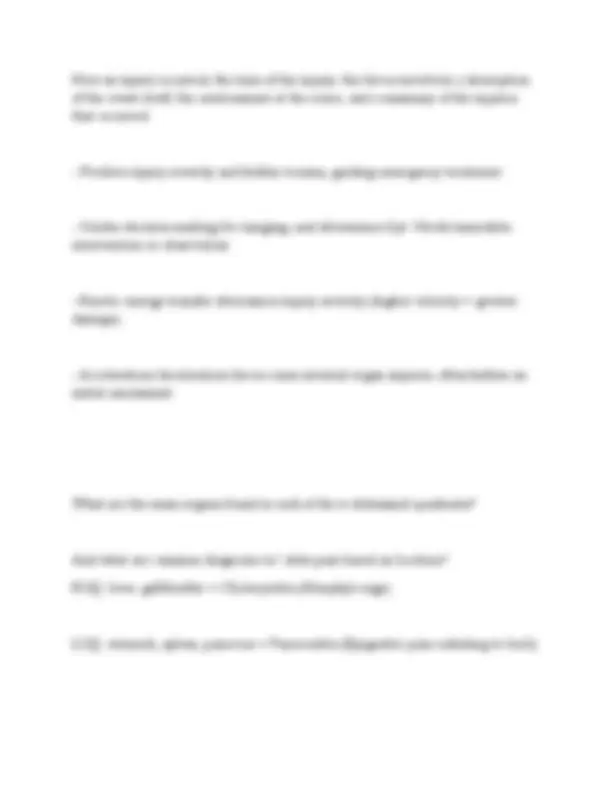
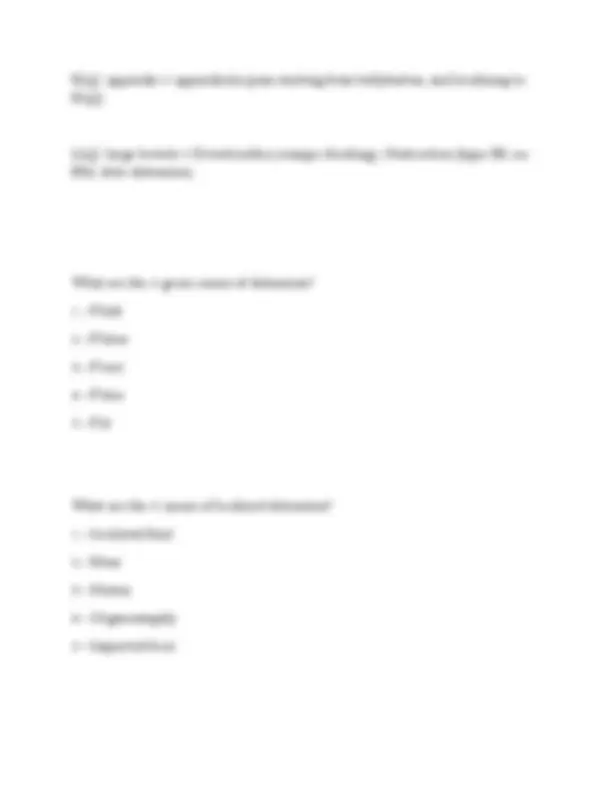
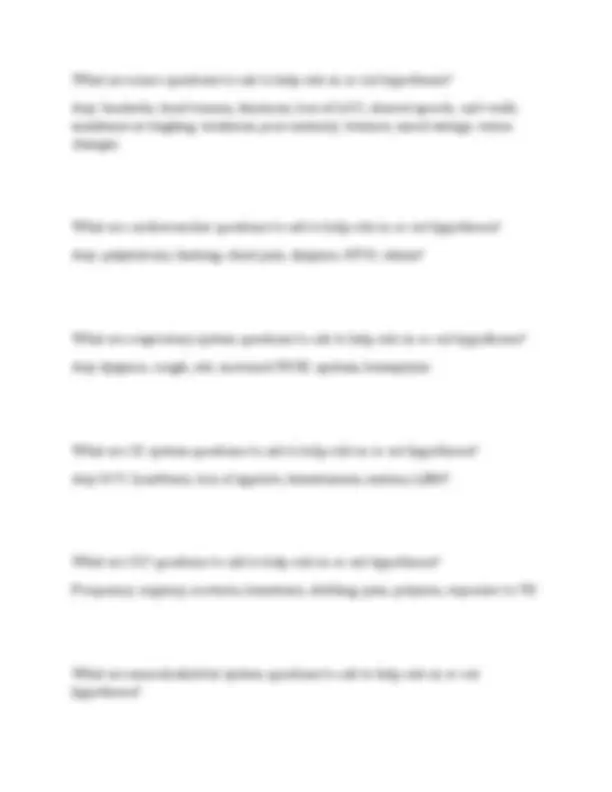
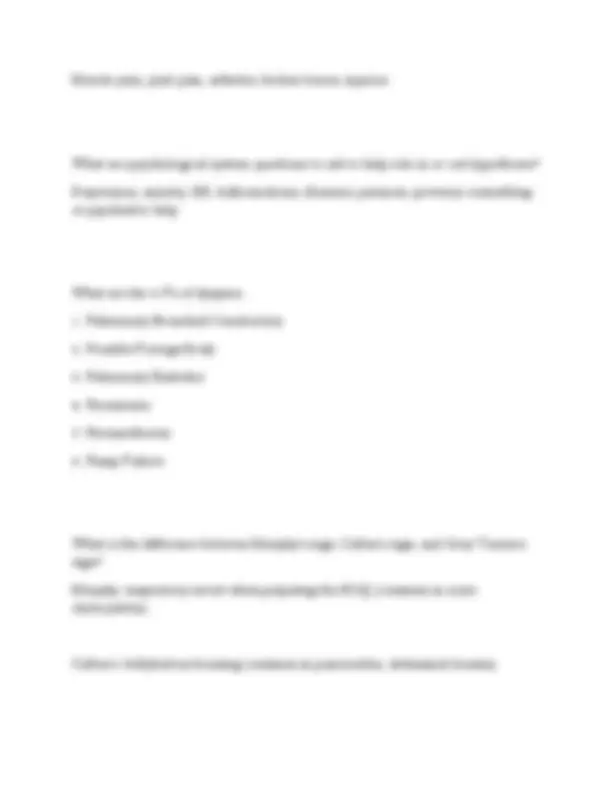
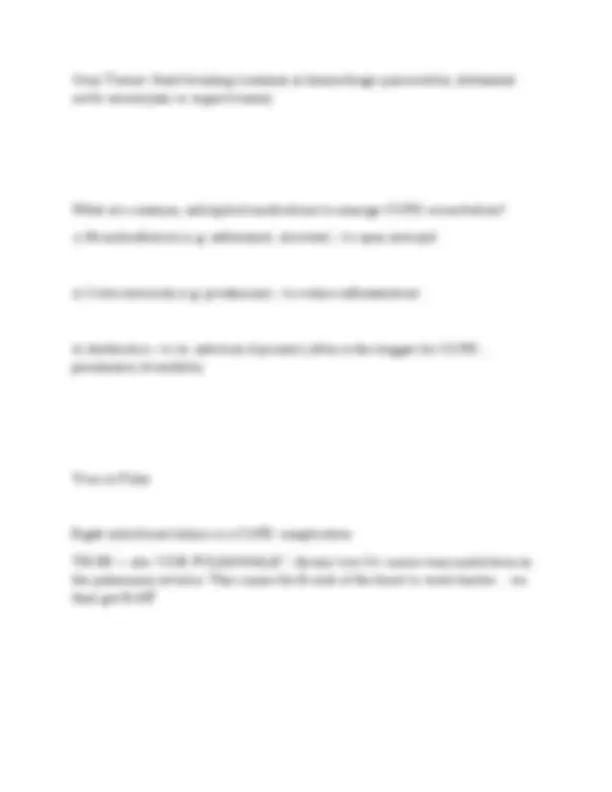
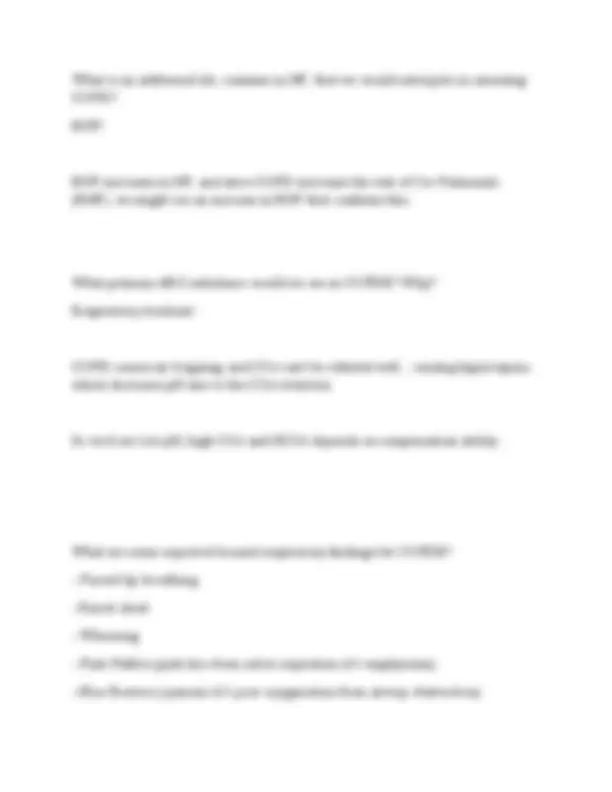
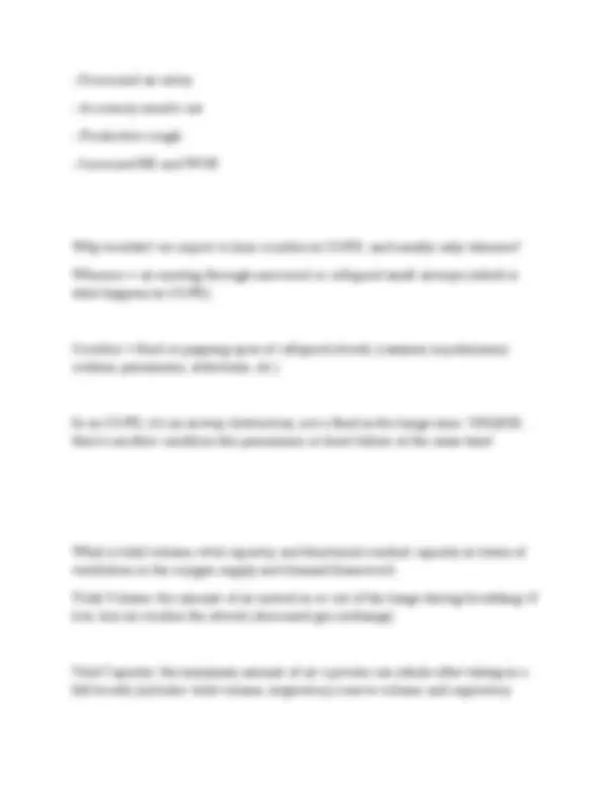
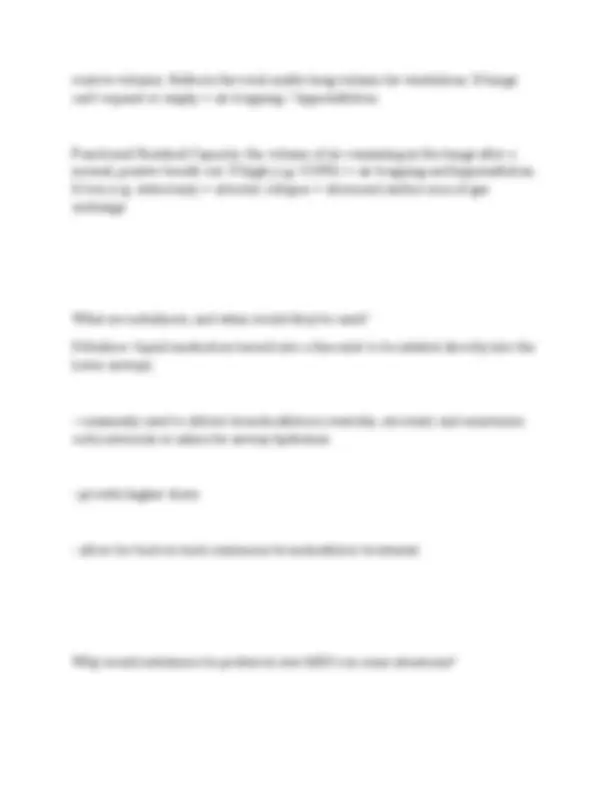
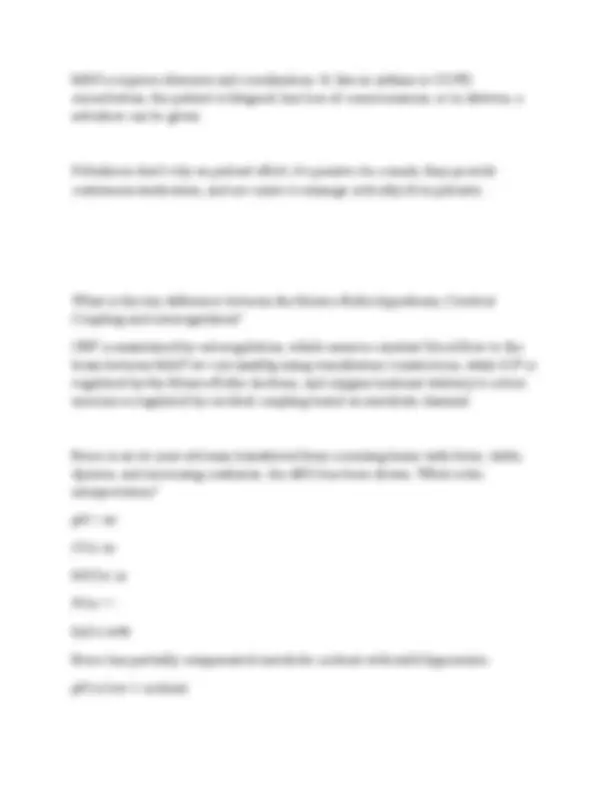
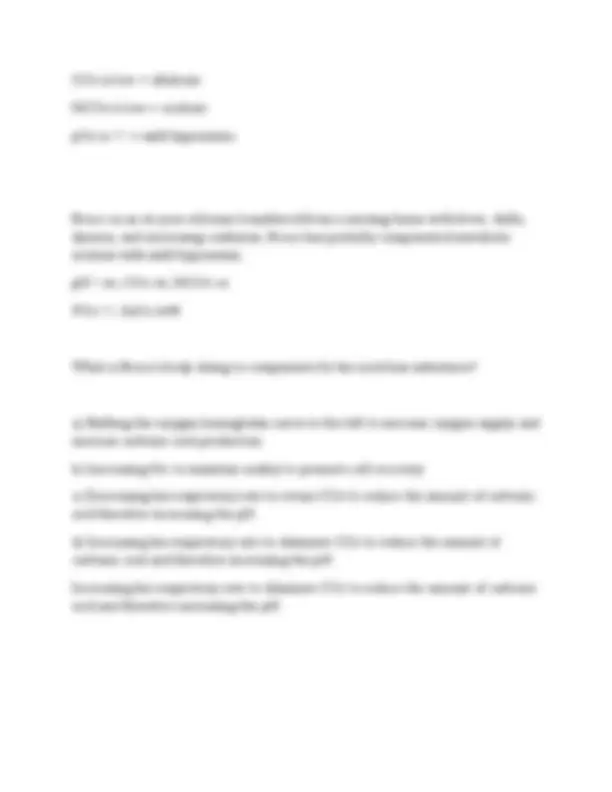
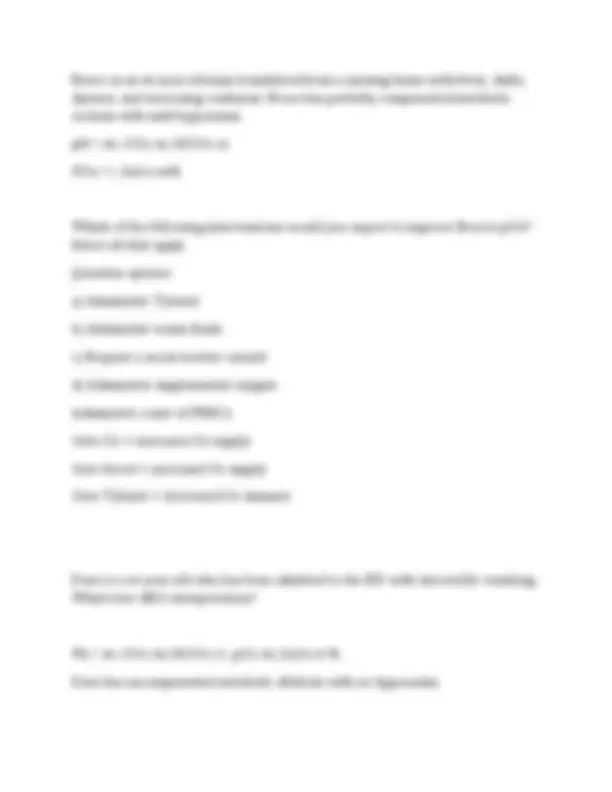
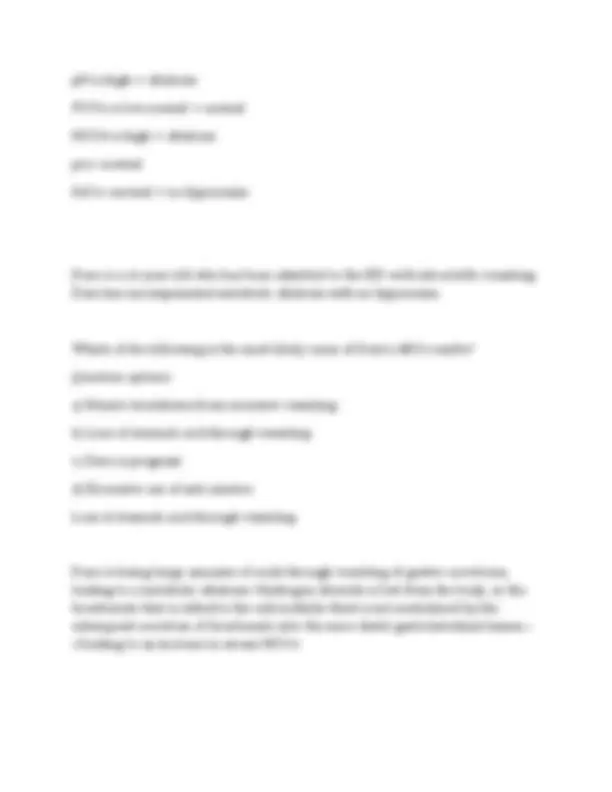
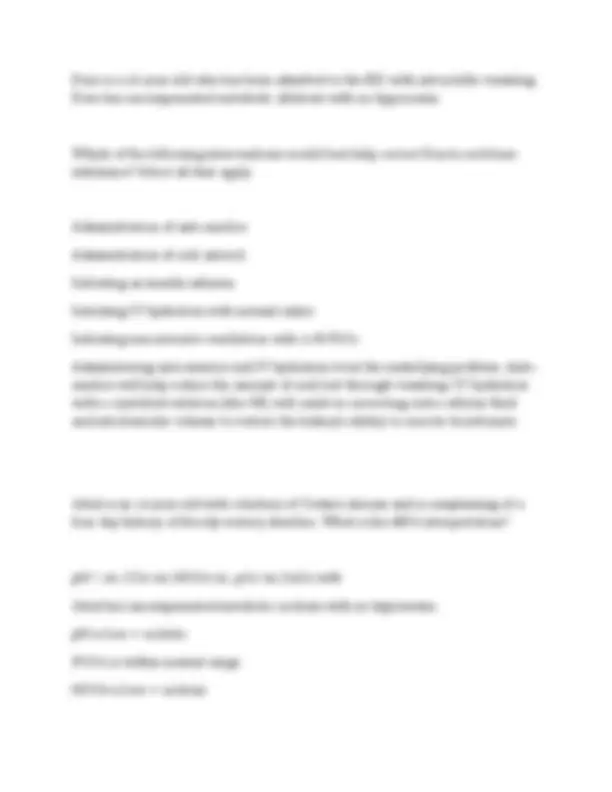
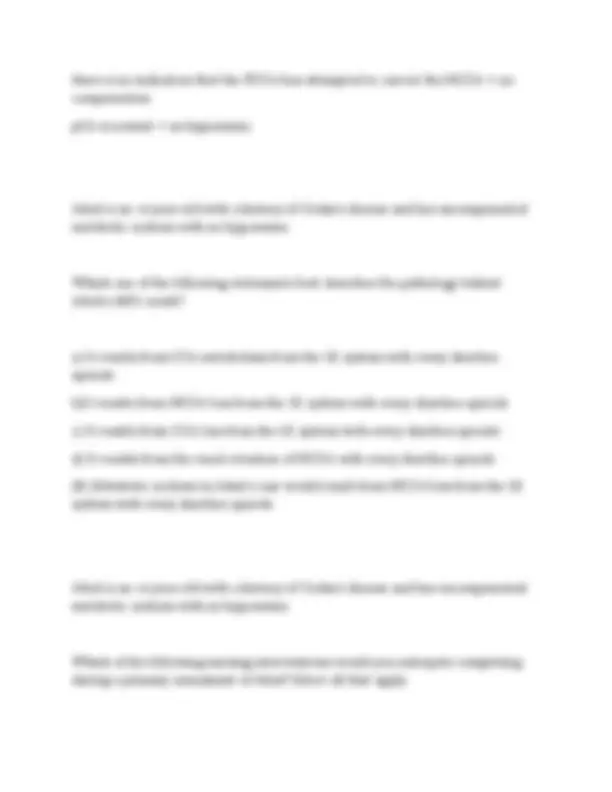


Study with the several resources on Docsity

Earn points by helping other students or get them with a premium plan


Prepare for your exams
Study with the several resources on Docsity

Earn points to download
Earn points by helping other students or get them with a premium plan
Community
Ask the community for help and clear up your study doubts
Discover the best universities in your country according to Docsity users
Free resources
Download our free guides on studying techniques, anxiety management strategies, and thesis advice from Docsity tutors
BCIT NSER 7110 EMERGENCY NURSING THEORY 1 FINAL EXAM 2025|REAL 250 Qs&As|100% VERIFIED|GRADED A+
Typology: Exams
1 / 103

This page cannot be seen from the preview
Don't miss anything!





























































































Desmond is a 20-year-old college student brought to the ED by his mother. He called her this morning stating he had the 'flu' for the past 3 days and feels miserable today. He arrives in a wheelchair, leaning over to one side. He appears flushed, is squeezing his eyes shut, and holding his forehead. His mother tells you that he is complaining of a headache, nausea, and photophobia. When you ask Desmond what is bothering him, he answers in a quiet but annoyed voice "everything hurts...I just want to sleep." Which of the following three (3) neurological hypotheses would best explain Desmond's presentation?
Desmond has had these symptoms for three days, making meningitis, concussion, and migraine more likely potential causes of his presentation. These conditions generally have longer symptom duration, whereas a narcotic overdose or a seizure would present in a more acute state. Which one (1) of the following is not a common symptom of meningitis? a) Photophobia b) Head ache c) Abdominal pain d) Neck stiffness e) Nausea (C) Signs and symptoms of meningitis include photophobia, headache, neck stiffness, nausea, fever, and fatigue. In general, viral meningitis will present with milder severity of symptoms compared to bacterial meningitis. Which of the following statements about the pathophysiology behind increased intracranial pressure in meningitis are true? Select all that apply. 1) Proliferation of neutrophils and cytotoxic inflammatory agents cause increased CSF viscosity, therefore obstructing it's drainage from the brain.
Denies history of trauma
**- Denies hx. of fever
SAH is the leakage of blood from an injured/defective vessel in the subarachnoid space of the brain. The oozing of blood into the subarachnoid space increases the intracranial blood volume leading to increased ICP. You would expect to see hypertension, not hypotension. The body is attempting to increase cerebral blood flow by increasing MAP to counteract the rising ICP. CPP = MAP - ICP. Sawyer is a 35-year-old male brought in by EHS after apparently being hit in the head with a baseball bat during a "drug deal gone bad." Witnesses report that the patient had LOC x 1 minute. Sawyer is alert on arrival, is yelling, and appears combative. EHS states he reeks of alcohol and his vital signs are: HR 108, RR 24, and BP 130/70. EHS was unable to obtain an oxygen saturation or temperature. Referring to the mnemonic AEIOUTIPS, which of the following are ED presentations are most likely to mask head injuries? Fentanyl Overdose COPD Exacerbation ETOH intoxication Pulmonary Embolus Hypoglycemia Myocardial infarction Bowel obstruction Psychosis
**- Fentanyl OD
d) Coughing e) Nursing interventions (B) The answer is sleeping :) In the ED we cannot directly measure cerebral oxygen demand. Instead, it is determined through the physical (neuro) exam. Subtle changes in level of consciousness are the most important signs that oxygen supply is no longer meeting cerebral oxygen demand. Cerebral oxygen demand increases with pain, anxiety, fever, agitation, coughing, straining, seizure activity and of course nursing care (position changes, interventions etc.) As ED nurses how can we help to decrease cerebral oxygen demand? Treat the cause and plan your interventions to avoid increasing ICP. Which of the following are normal levels for their corresponding lab value?
Suspected hypotheses for a patient who presents with SOB, left upper quadrant pain and history of a fall would include?
Which statement is false? Question options: A) Most crackles are inspiratory and may indicate fluid accumulation. B) Wheezes indicate a narrowing of bronchioles and are common with asthma C) Vesicular breath sounds are heard near the larynx and trachea. D) A pleural rub may be an indicator of cancer. C) Vesicular breath sounds are heard near the larynx and trachea. Which is NOT an area of focus when collecting a respiratory history? Question options: A) past medical history B) allergies C) travel history D) current address D) current address Which of the following is not a hollow organ? Question options: A) heart
B) lung C) spleen D) bladder C - spleen A patient who comes to the ED after a history of three days of vomiting may present with which of the following ABGs: Question options: A) pH 7.48, pCO2 38, PaO2 90, HCO3 30 B) pH 7.52, PaCO2 31, PaO2 78, HCO3 19 C) pH 7.36, PaCO2 29, PaO2 108, HCO3 20 D) pH 7.37, PaCO2 58, PaO2 65, HCO3 29 A) pH 7.48, pCO2 38, PaO2 90, HCO3 30 Which of the following statements is true? Question options: A) A patient who has a high CO2 value will compensate with an decreased RR. B) A patient in an uncompensated state will have an irregular respiration rate and abnormal kidney functions. C) A fully-compensated patient will have a pH within normal limits.
Which of the following is the least likely differential diagnosis for a 40-year-old female patient with right upper chest pain radiating into the shoulders? Question options: A) cholecystitis B) migraine C) myocardial infarction D) pleural effusion B) migraine A 7-year-old female presents to the Emergency Department with a 2-day history of right lower quadrant pain, fever, and vomiting. All of the following are differential diagnoses except: Question options: A) appendicitis B) Urinary tract infection (UTI) C) Upper respiratory tract infection (URTI) D) gastroenteritis C) Upper respiratory tract infection (URTI)
What is the best position for the patient to be in when doing a respiratory assessment? Question options: A) supine B) sitting position C) semi-Fowler's D) Trendelenburg B) sitting position What does the pH measure? Question options: A) the amount of hydrogen ions in the blood. B) the amount of bicarbonate ions in the blood. C) the amount of carbon dioxide ions in the blood. D) all of the above. A) the amount of hydrogen ions in the blood. Which would be an example of moral distress? Question options: A) when a patient with chest pain must wait in the waiting room because no beds are available B) wait times exceed that of CTAS guidelines to see a doctor
What impact does a heart rate of 180 have on cardiac output? Question options: A) decreases it B) increases it C) no effect A - decrease The primary effect of congestive heart failure on cardiac output is: Question options: A) decreased preload. B) Increased contractility. C) decreased contractility. D) increased preload. C) decreased contractility. Which receptors are sensory receptors located in the aortic arch and carotid arteries and monitor volume? Question options: A) alpha receptors B) beta-1 receptors C) chemoreceptors D) baroreceptors
How is preload affected if we give a bolus of 2 liters of NS? Question options: A) increases preload B) decreases preload C) no effect A) increases preload During a primary assessment, all of the following would be assessed except: Question options: A) temperature B) cardiac rate C) LOTARP a pain assessment D) oral edema D The coronary arteries fill with blood: Question options: A) during systole.
Which drug is contraindicated for the corresponding problem? Question options: A) Carvedilol to a patient with a history of asthma B) Nitroglycerin to a patient who has taken Viagra one week ago C) Aspirin to a patient with chest pain D) Warfarin for atrial fibrillation A How do beta blockers primarily affect the heart? Question options: A) increase rate B) decrease rate C) increases preload D) increase myocardial oxygen consumption (MVO2) B Stimulation of alpha receptors increases cardiac output by: Question options: A) decrease SA node firing B) increasing contractility.
C) vasoconstricting blood vessels. D) bronchodilation. C What is the value of normal cardiac output for an average adult? Question options: A) 2 liters per minute B) 5 liters per minute C) 10 liters per minute D) depends on too many other factors B Which drug and its correlated effect are false? Question options: A) Metoprolol primarily affects heart rate. B) Digoxin decreases the strength of cardiac contraction. C) Nitroglycerin lowers blood pressure D) Captopril works in the lungs to affect the kidneys to alter afterload. B